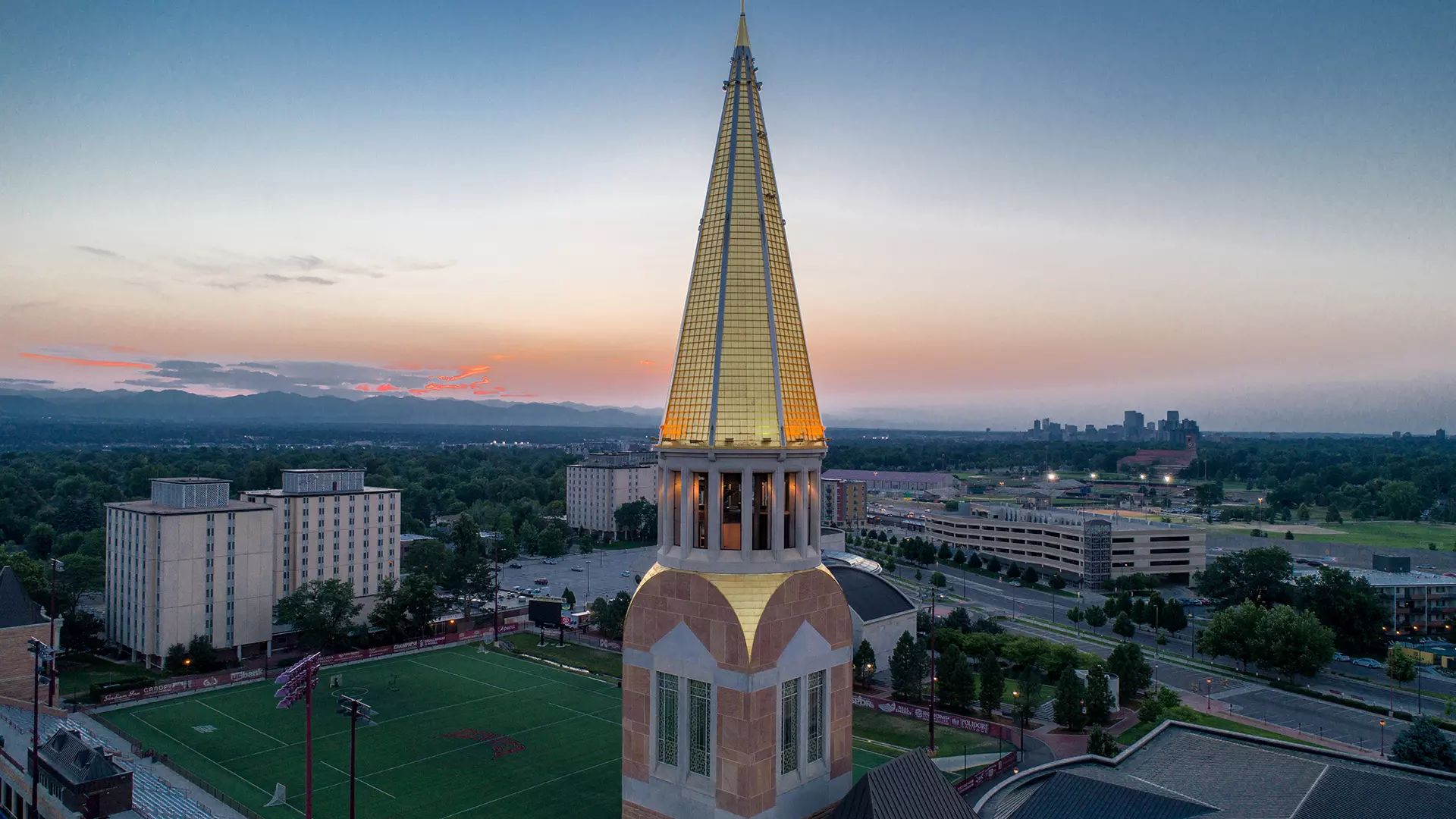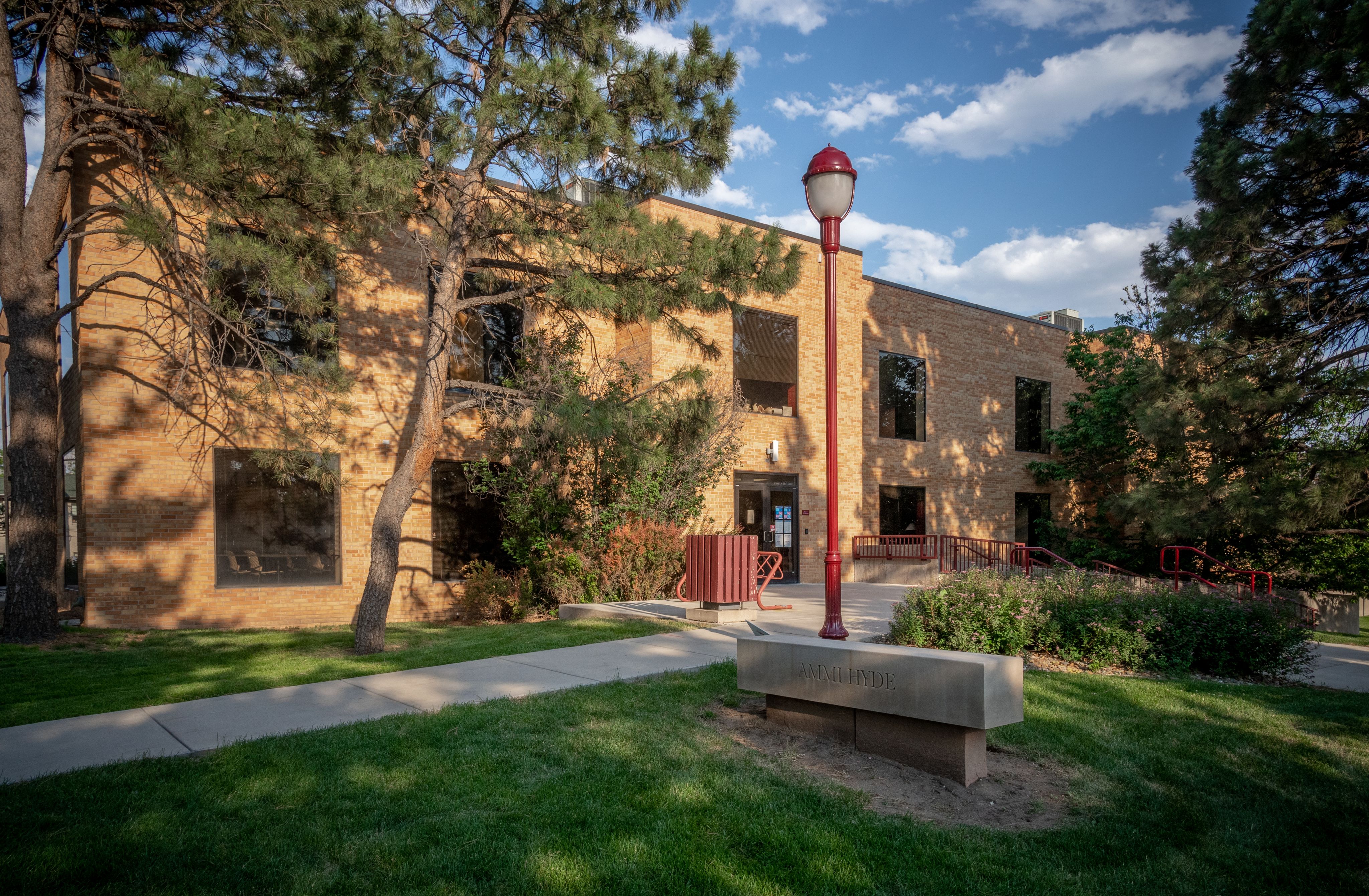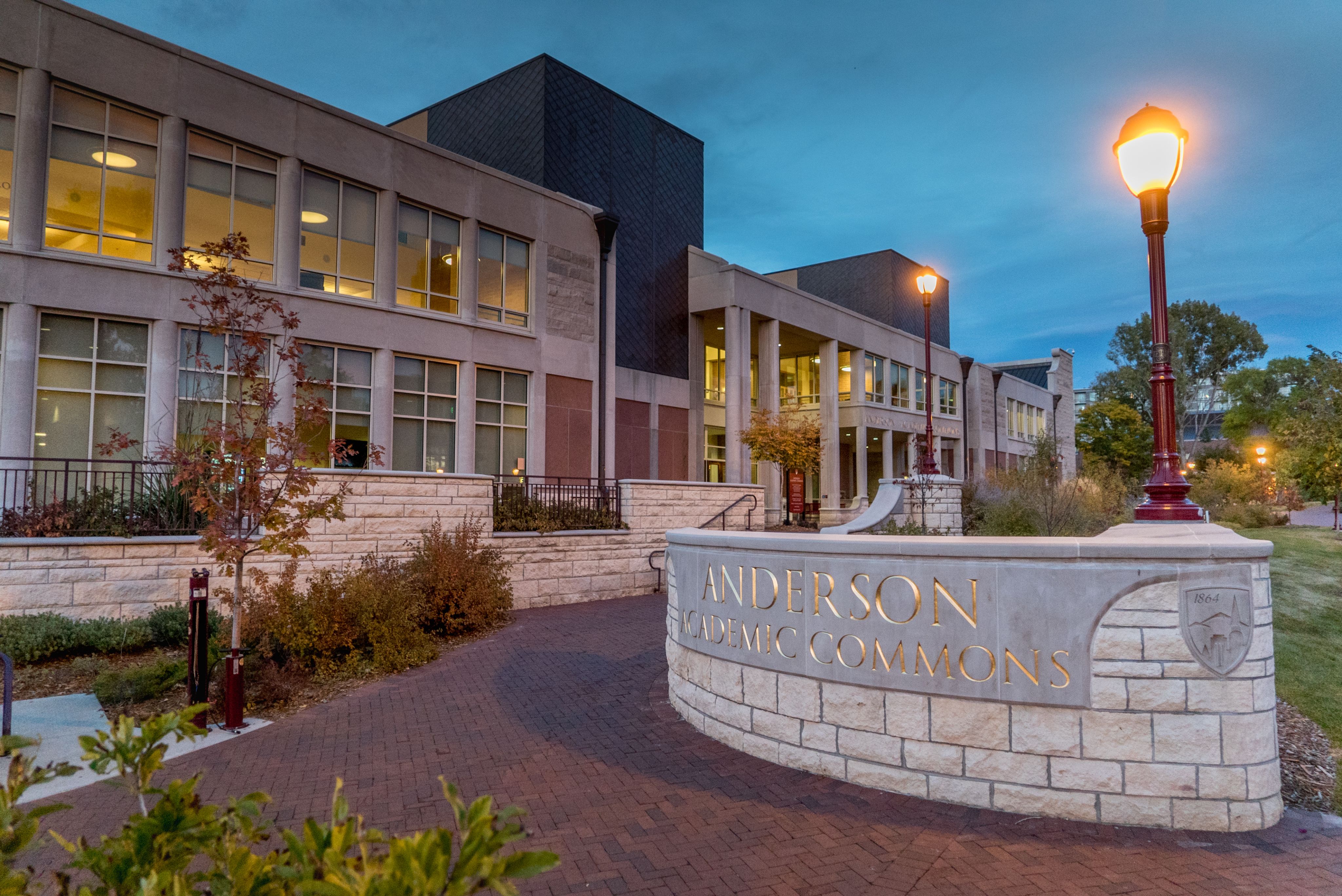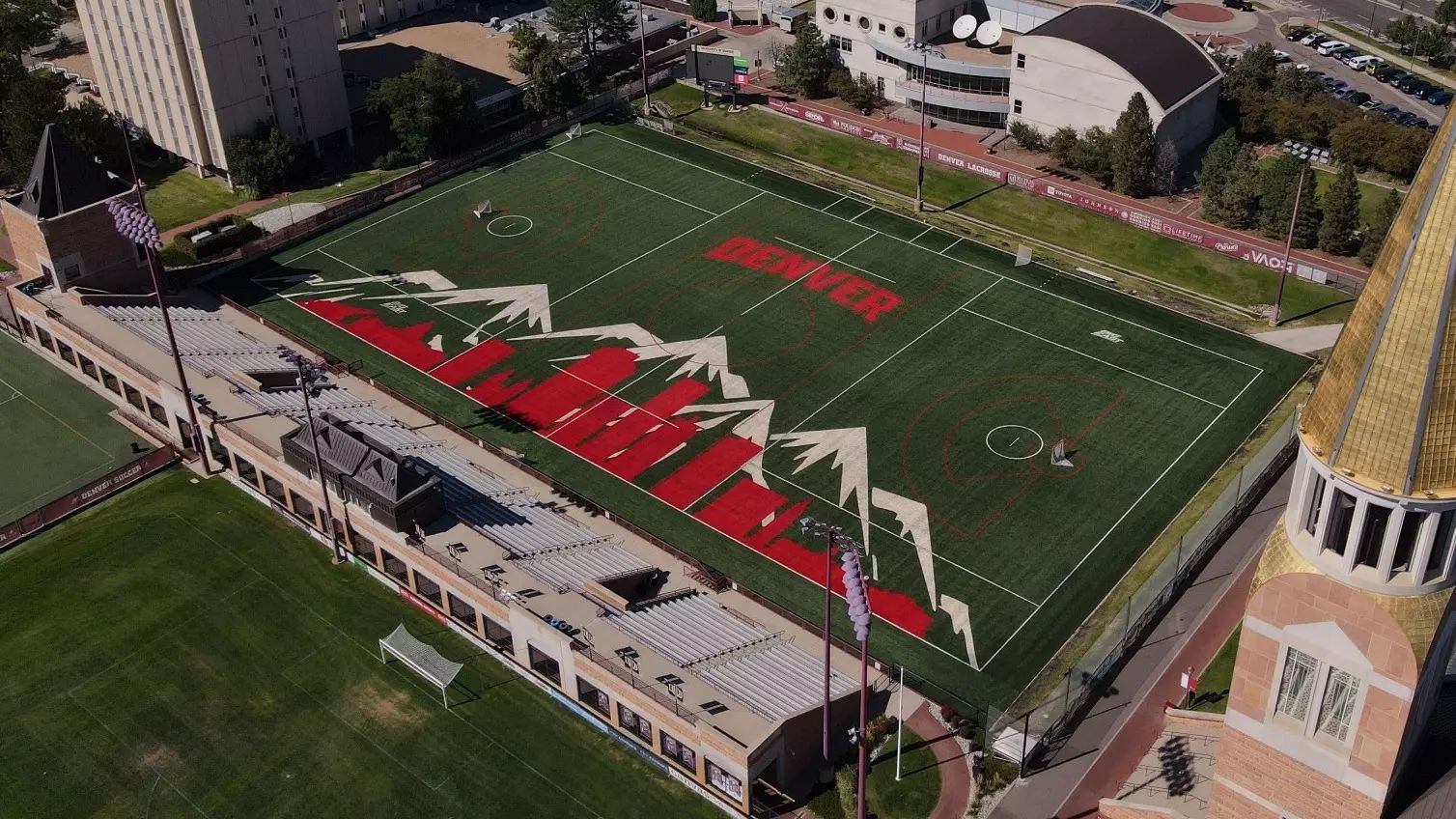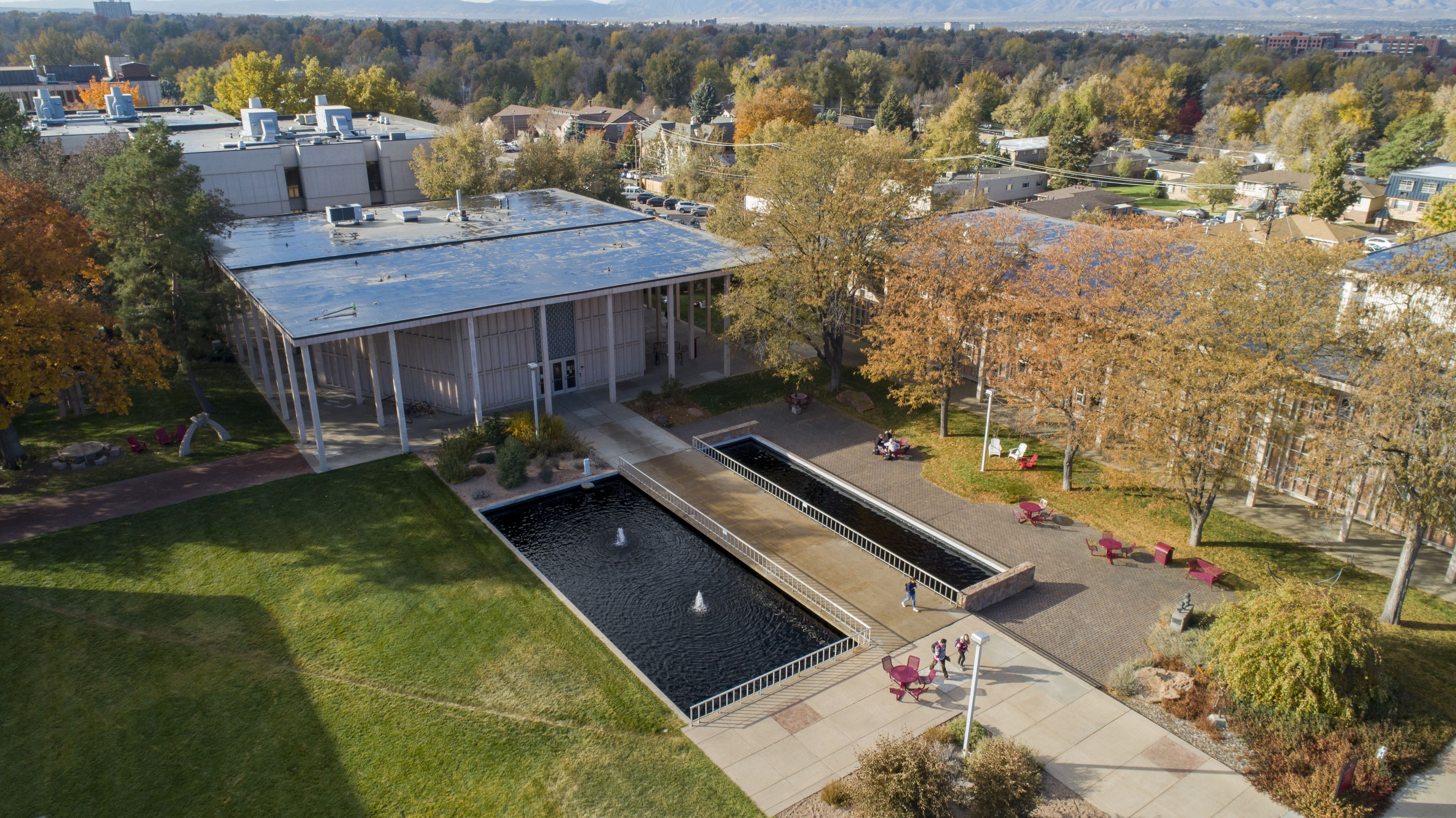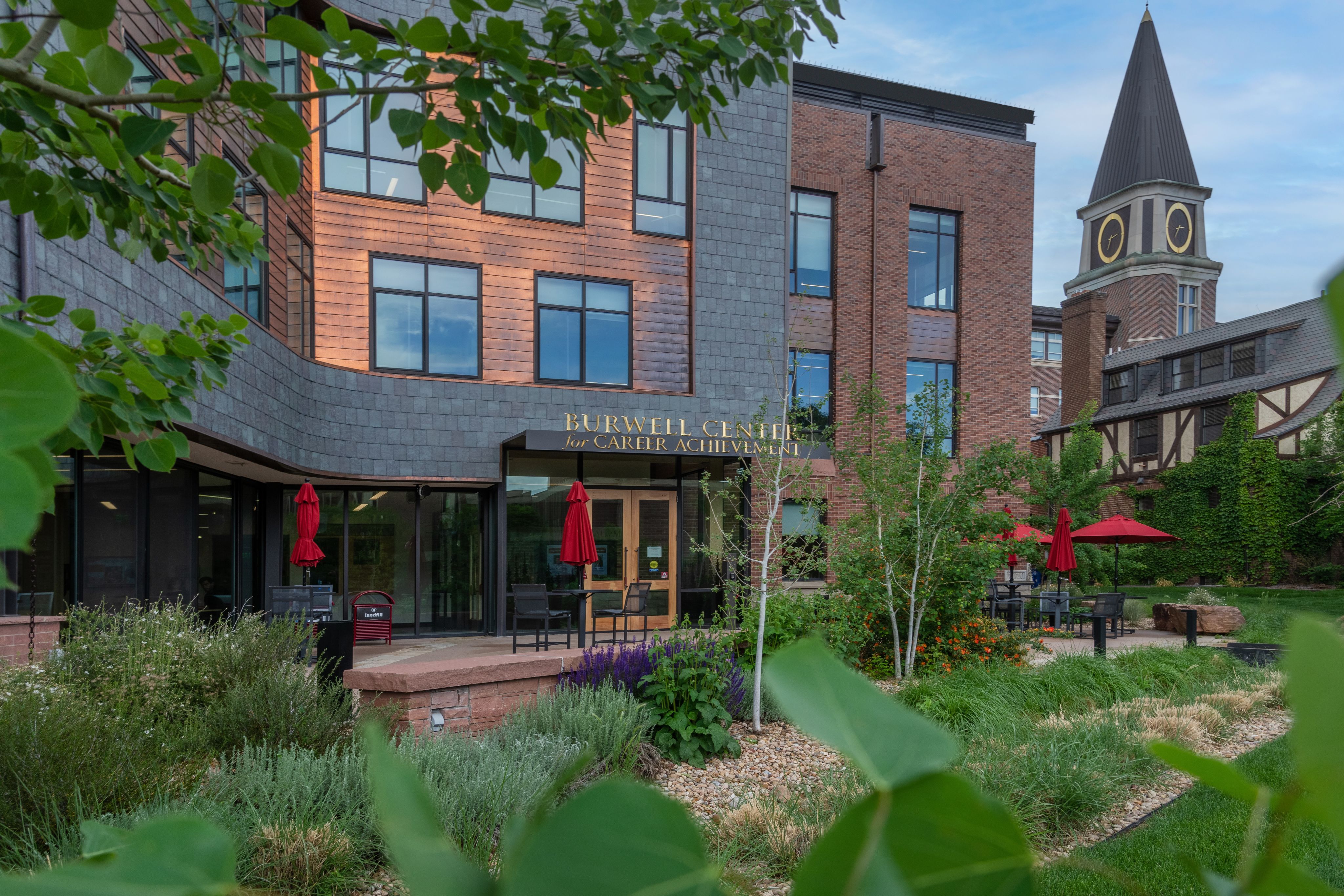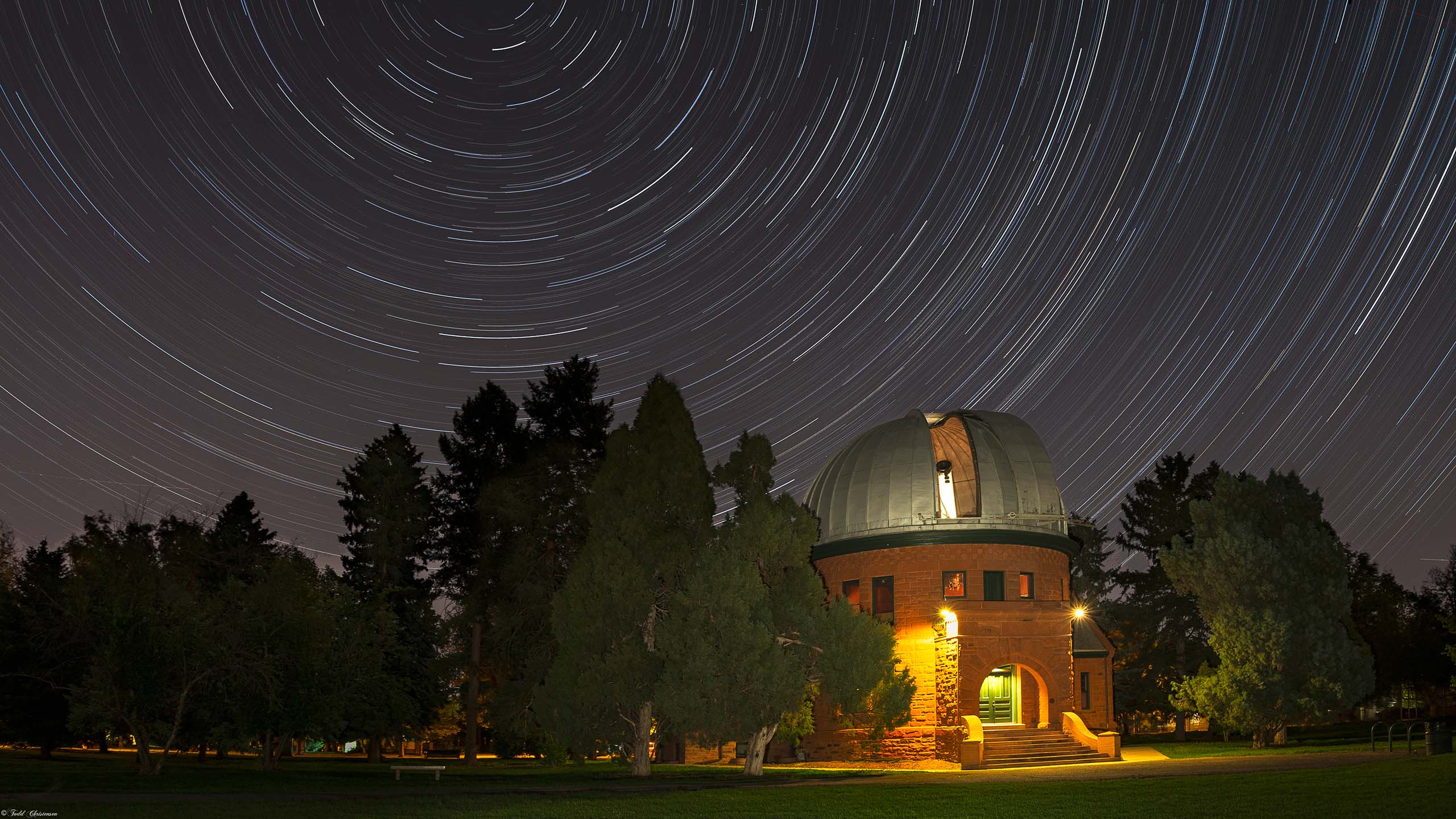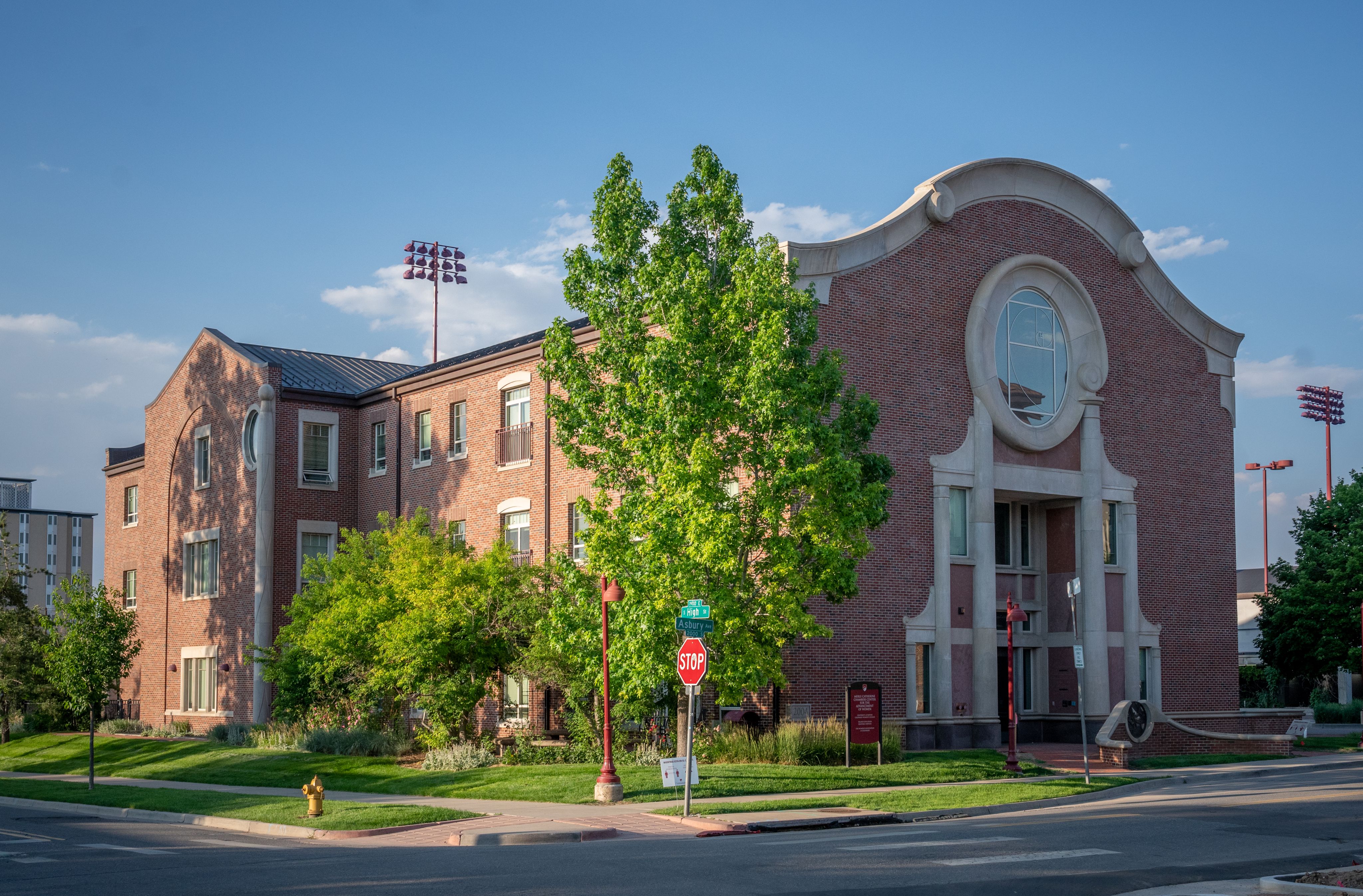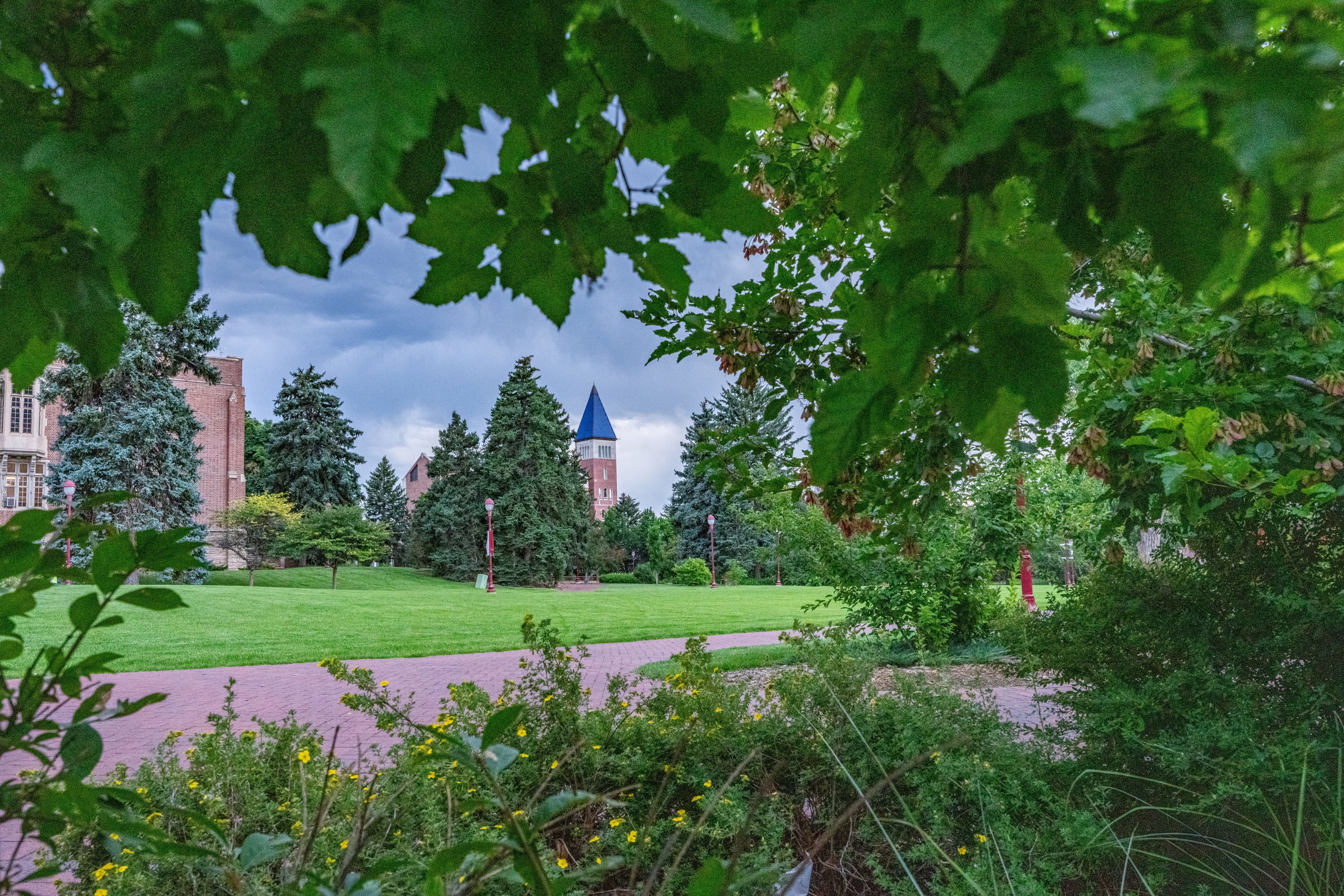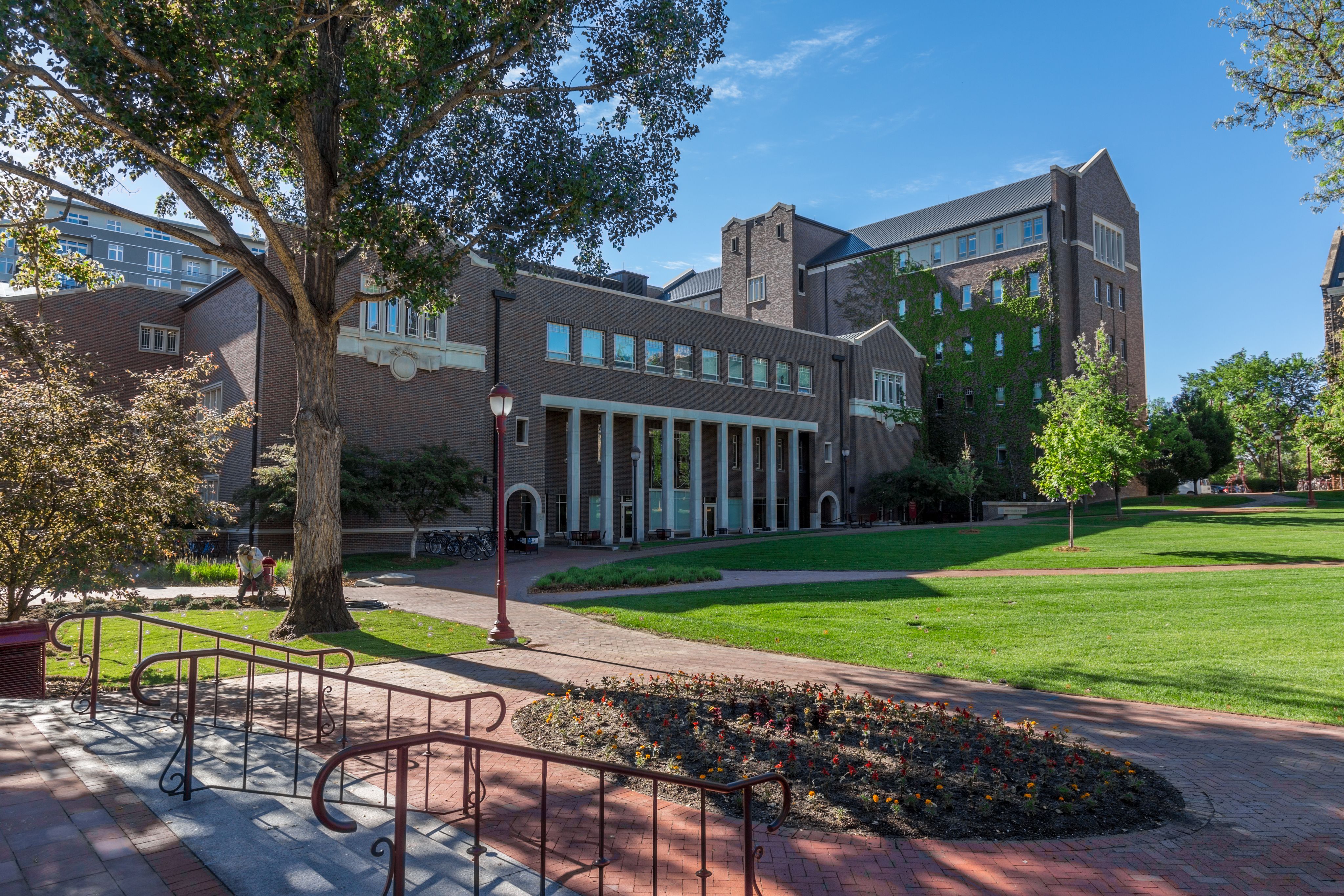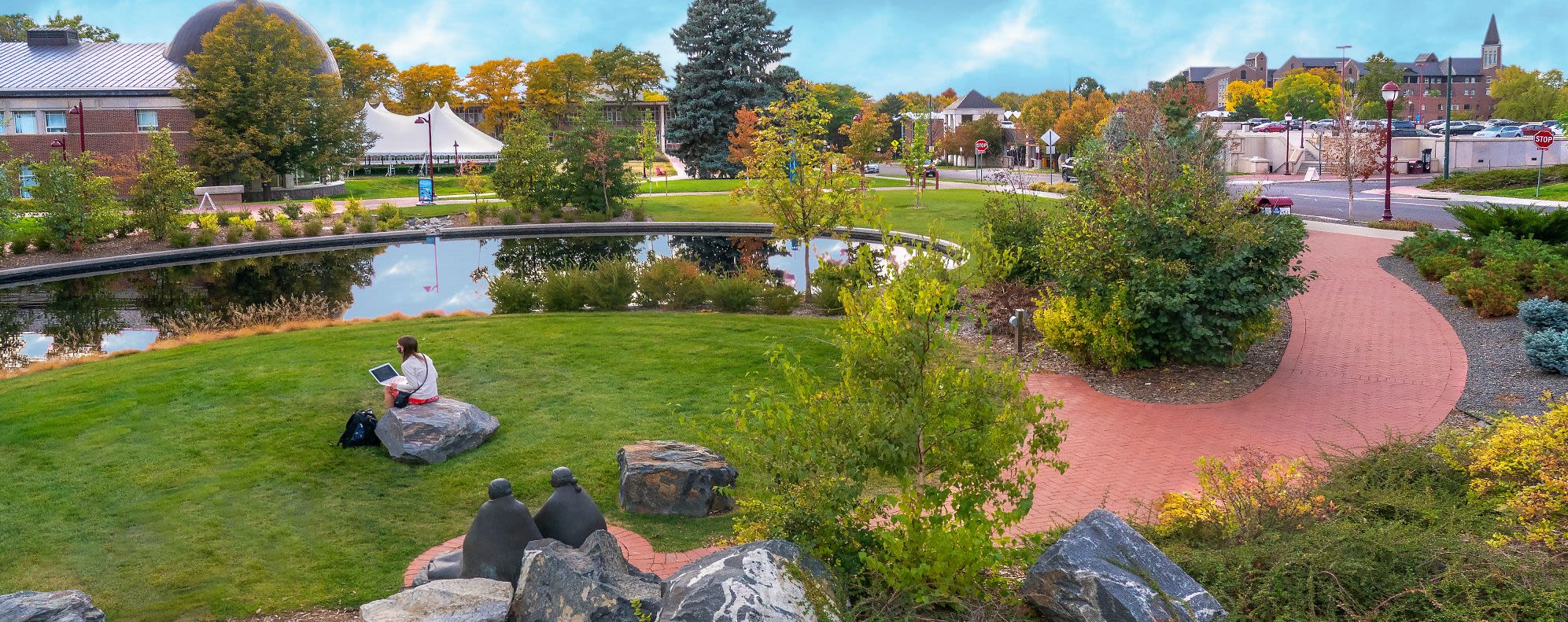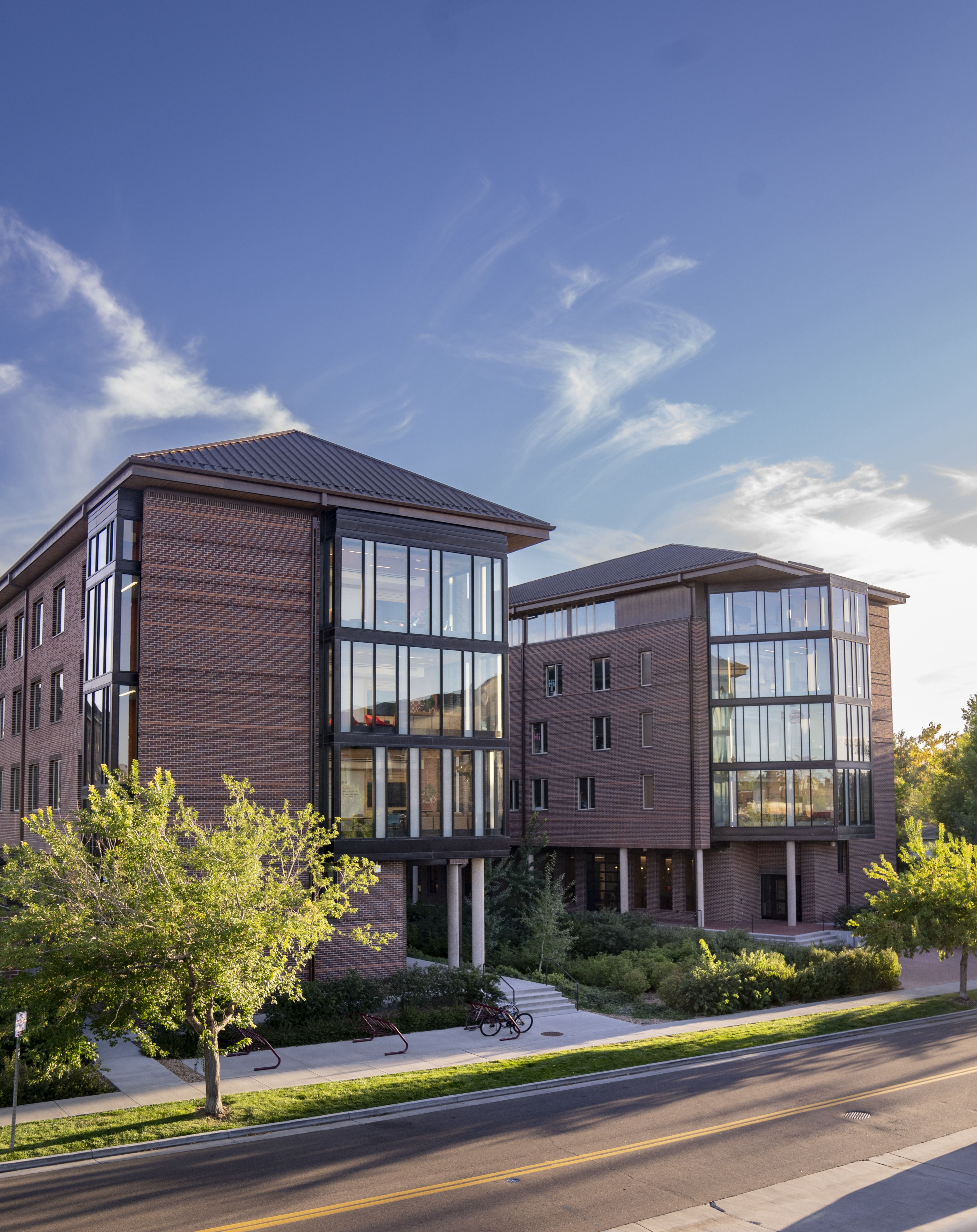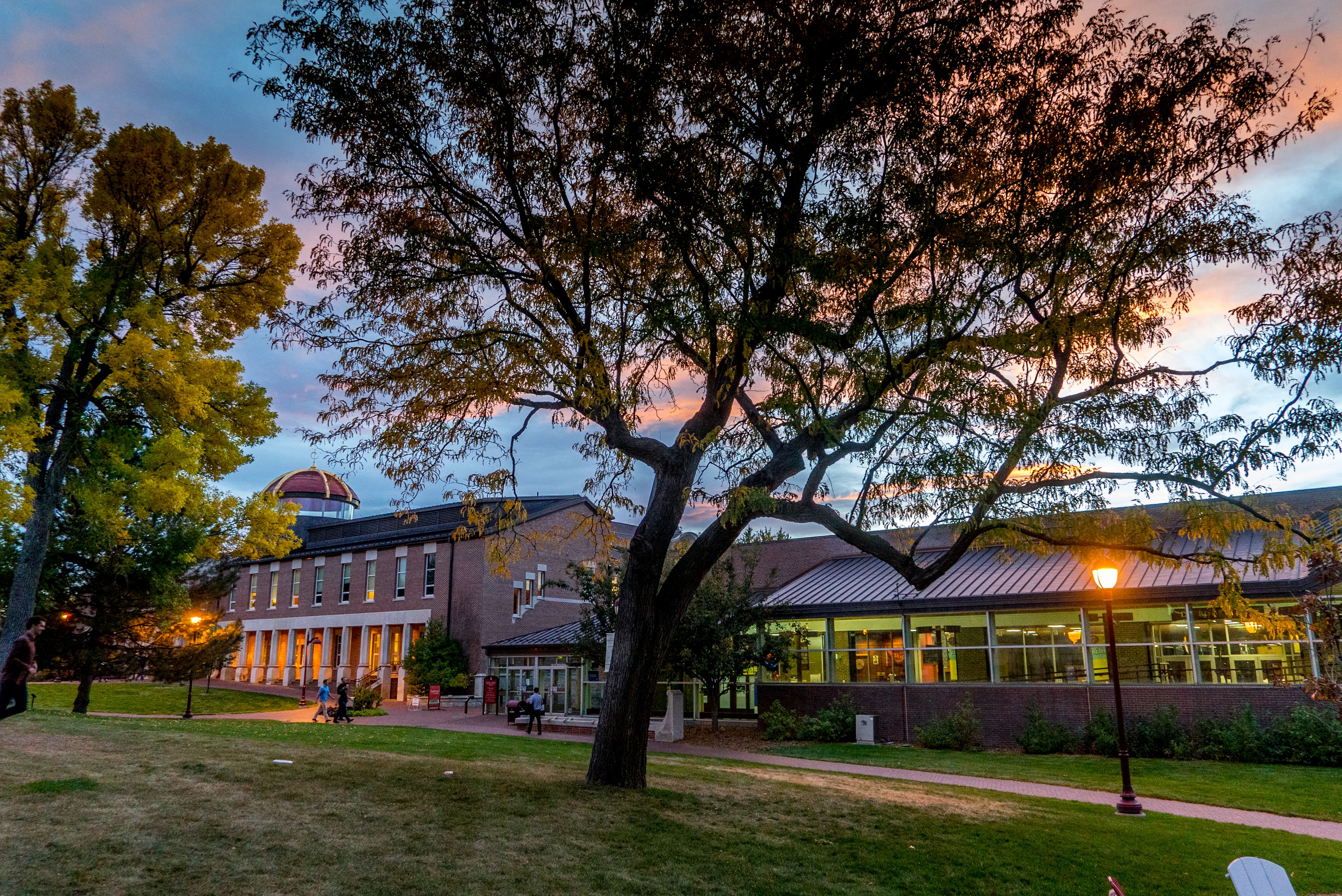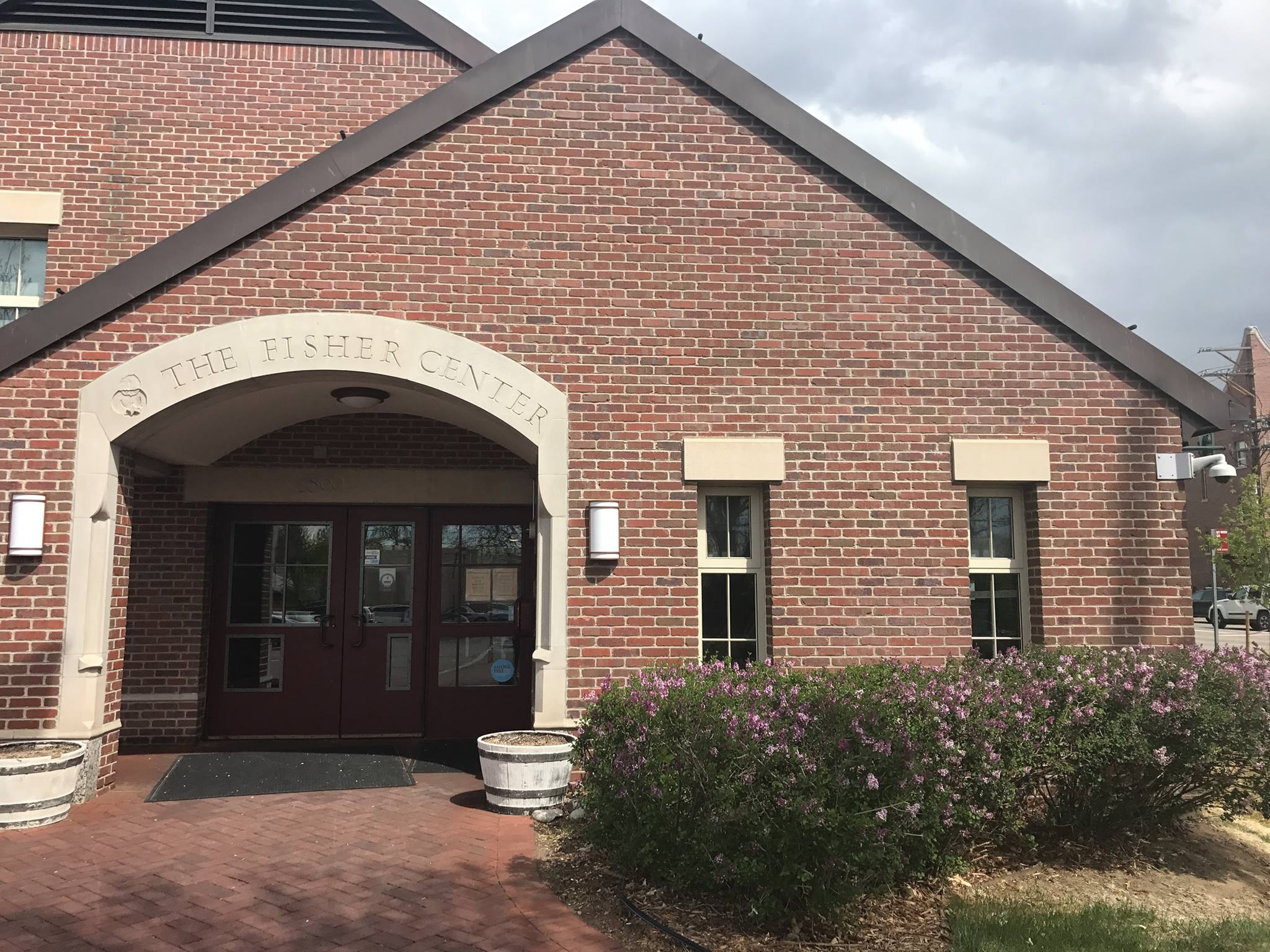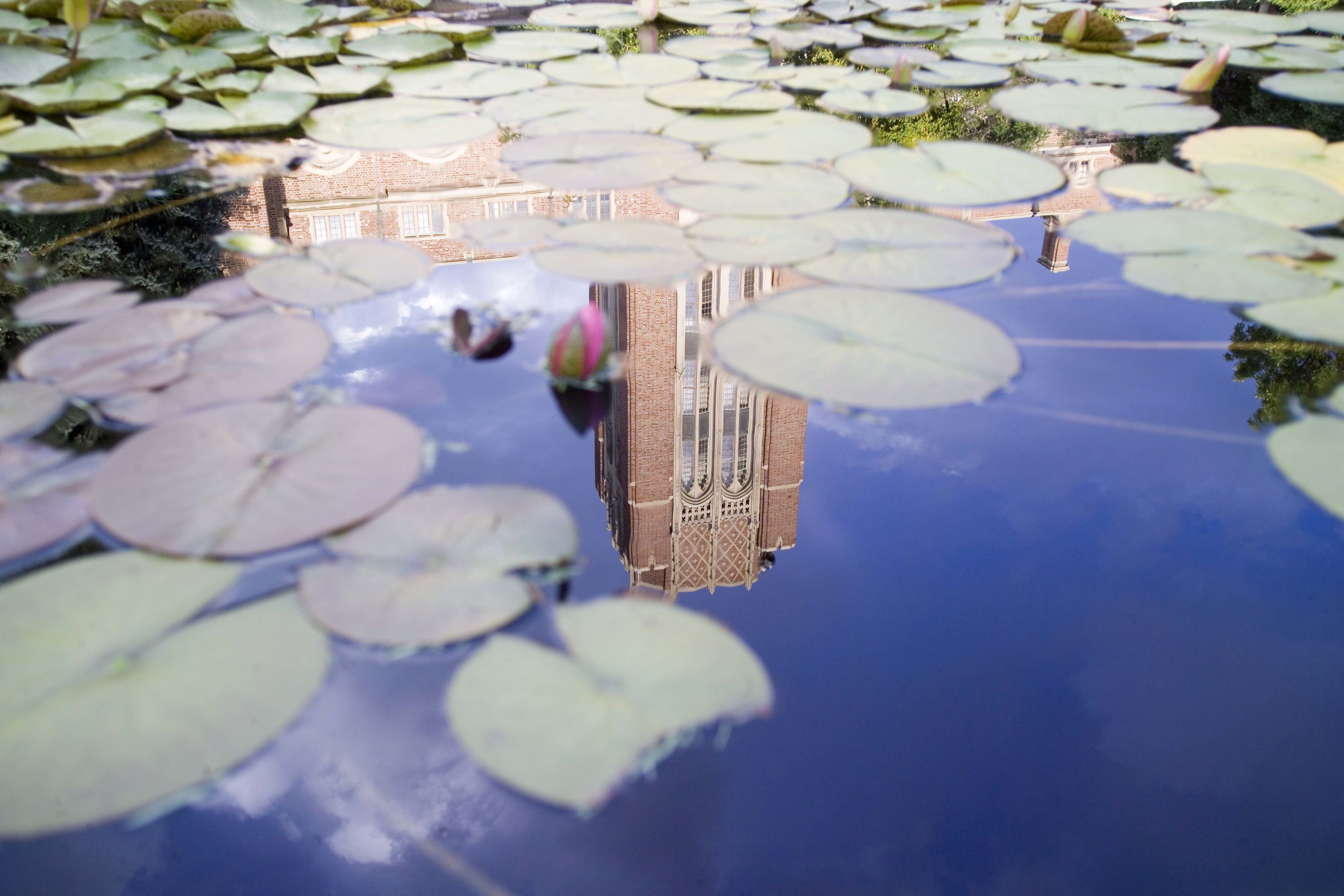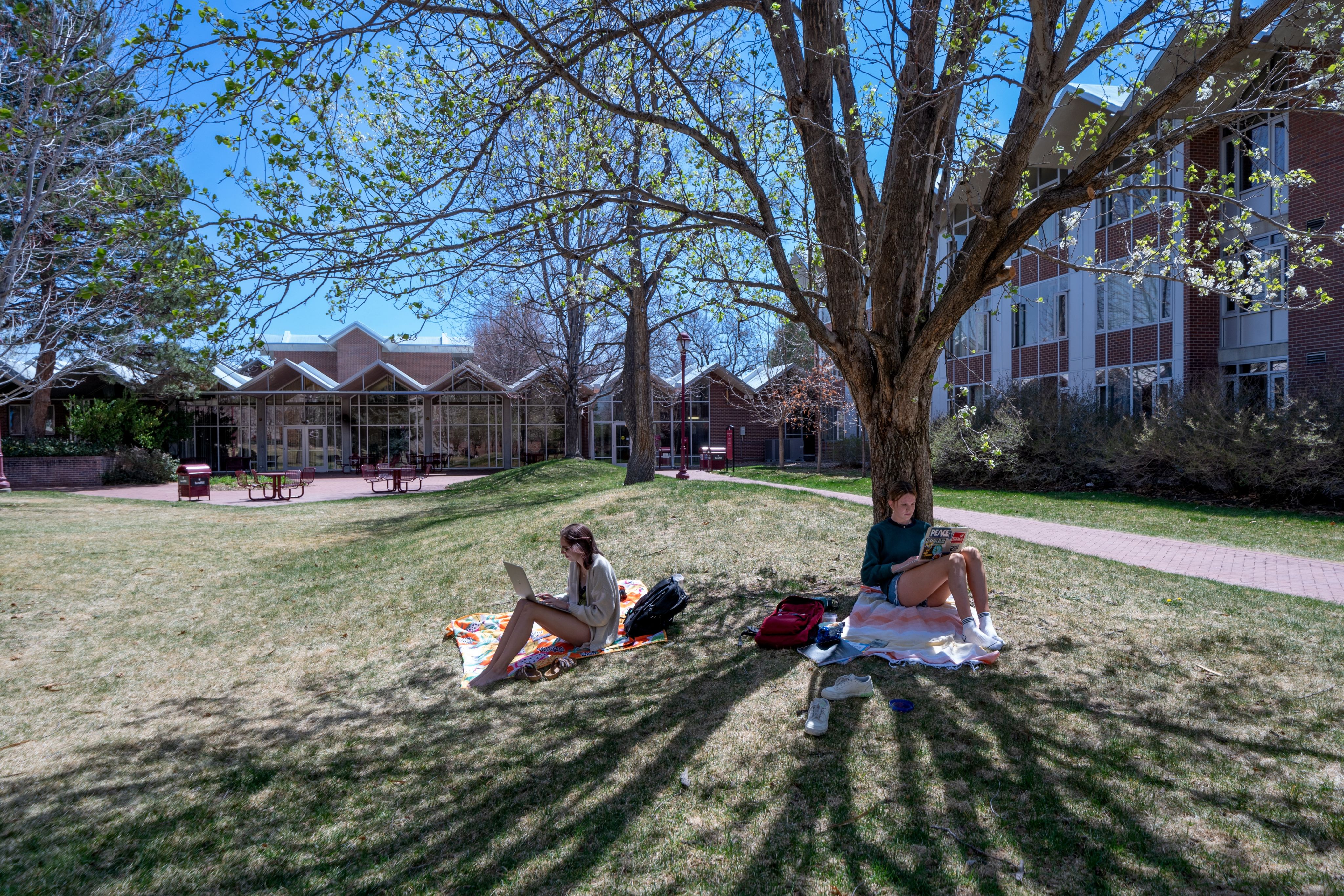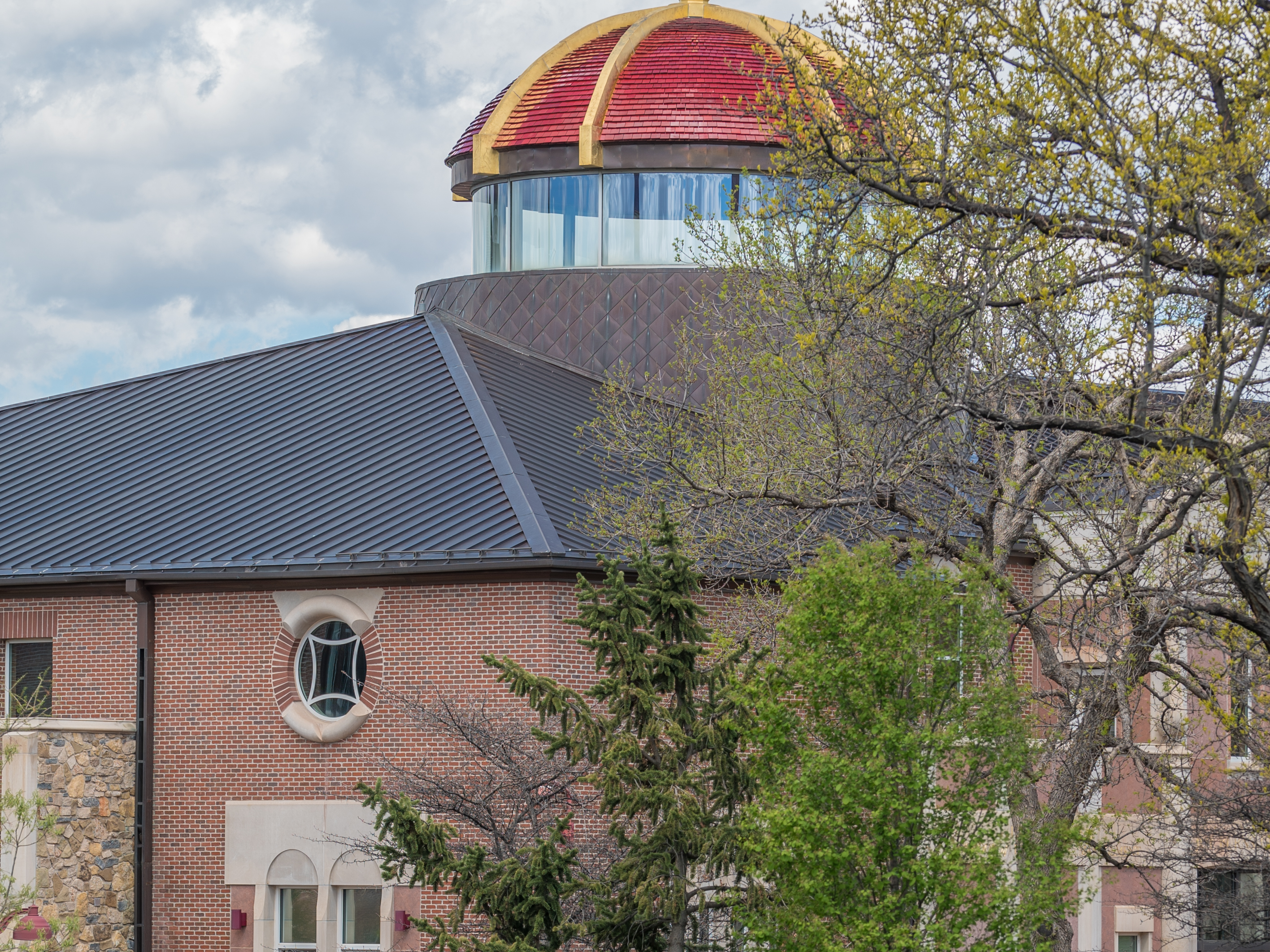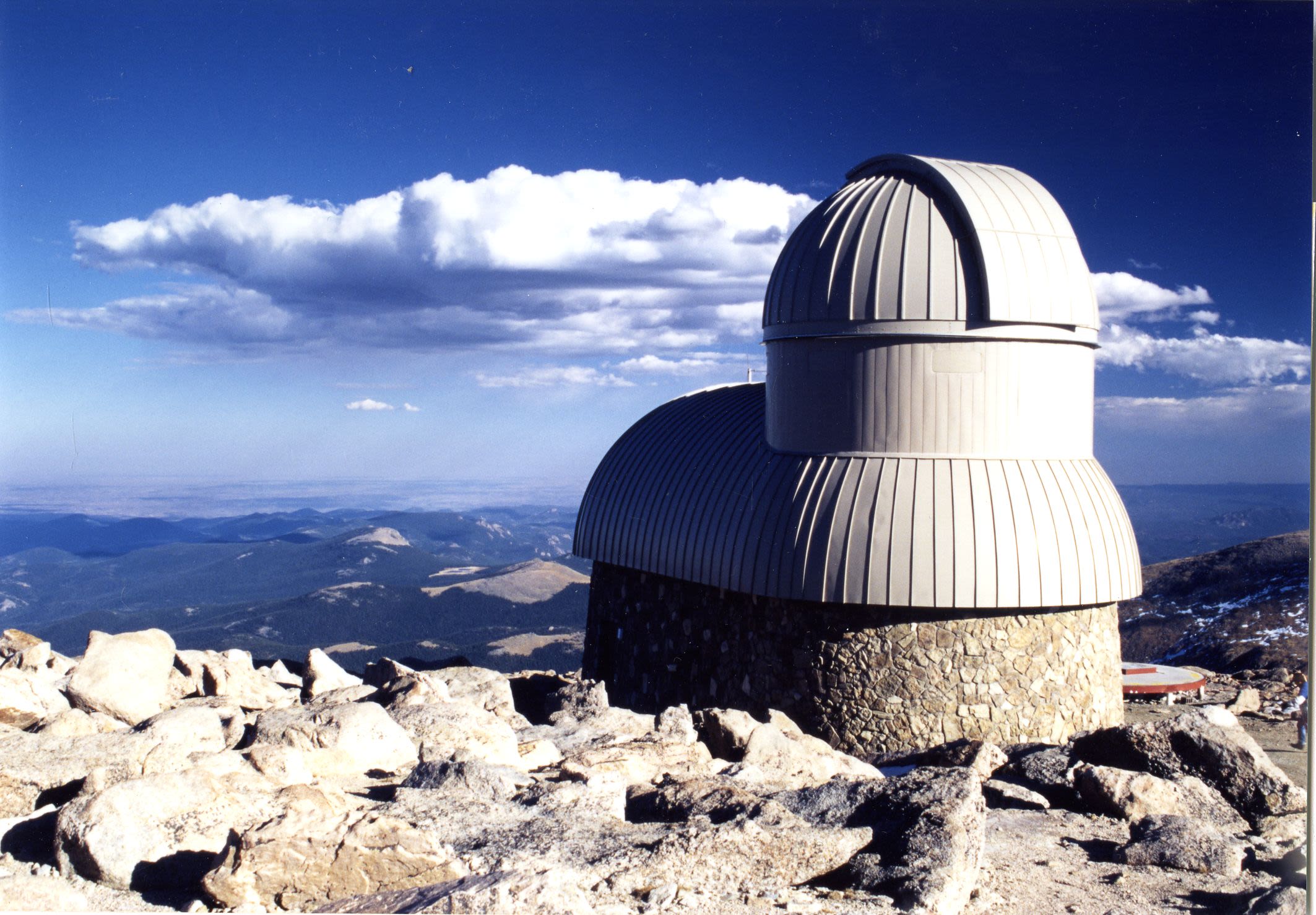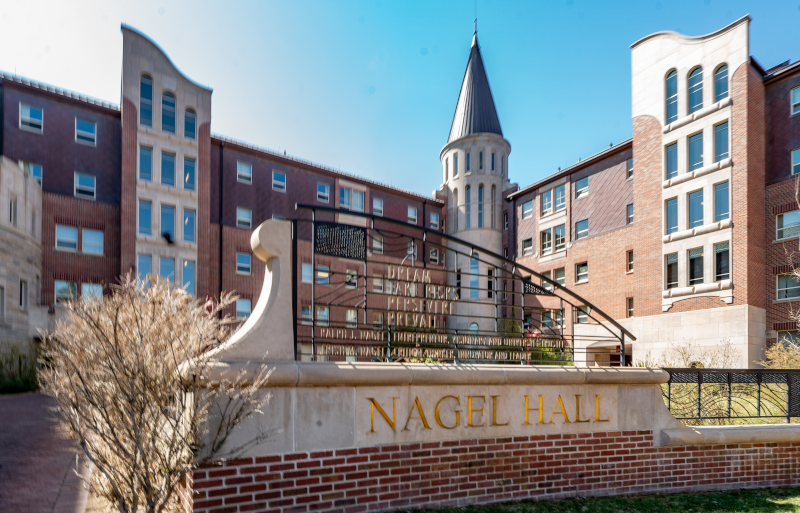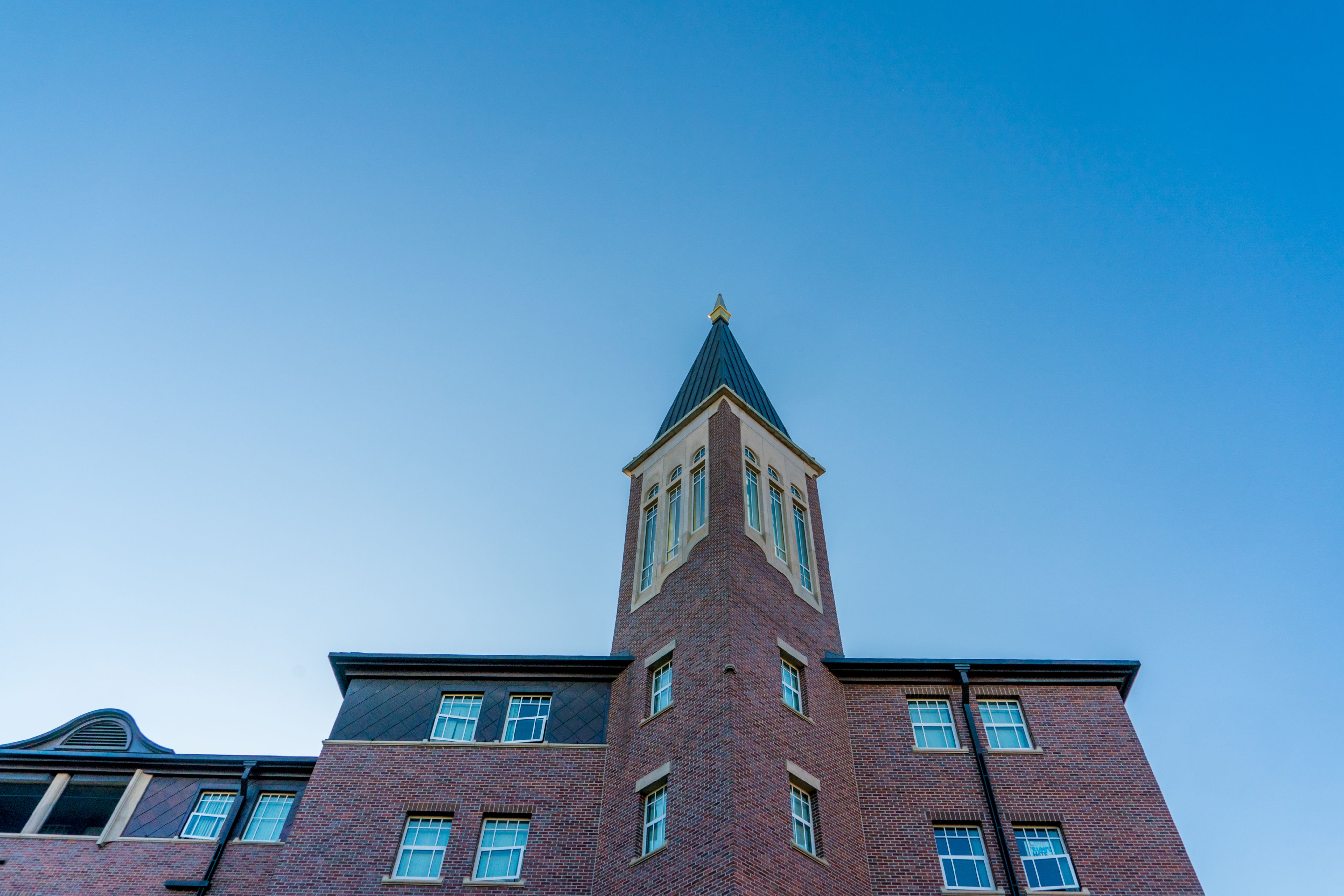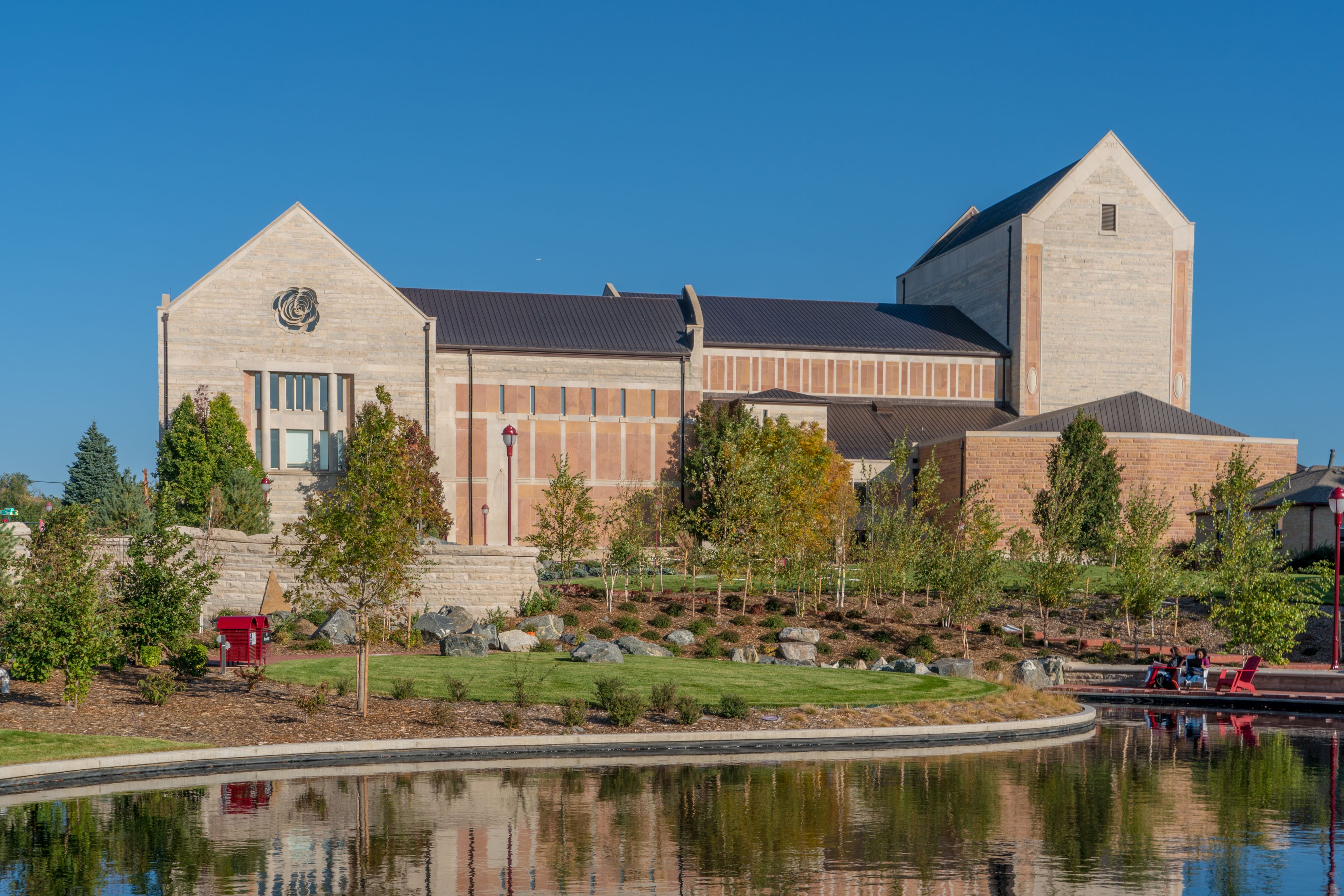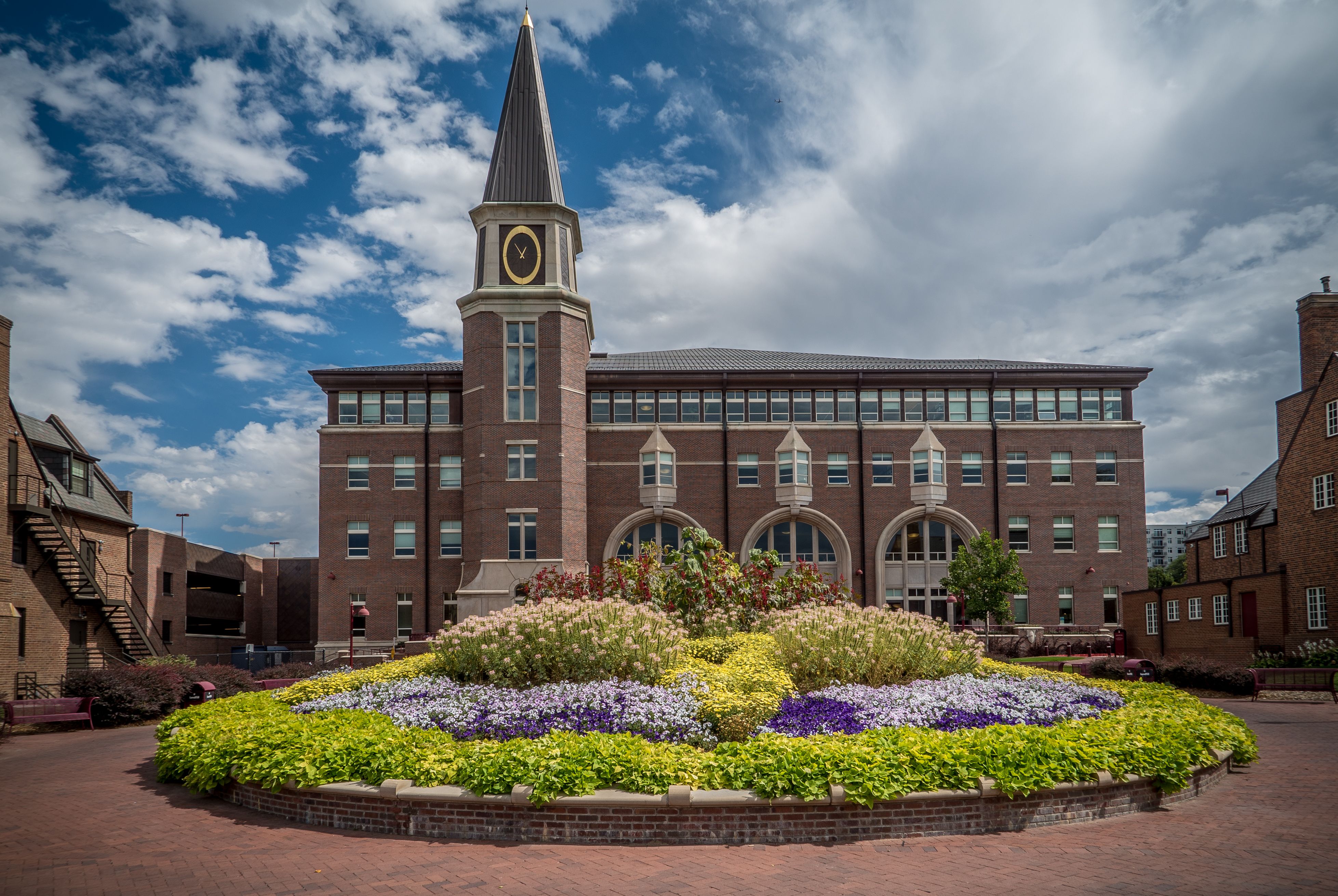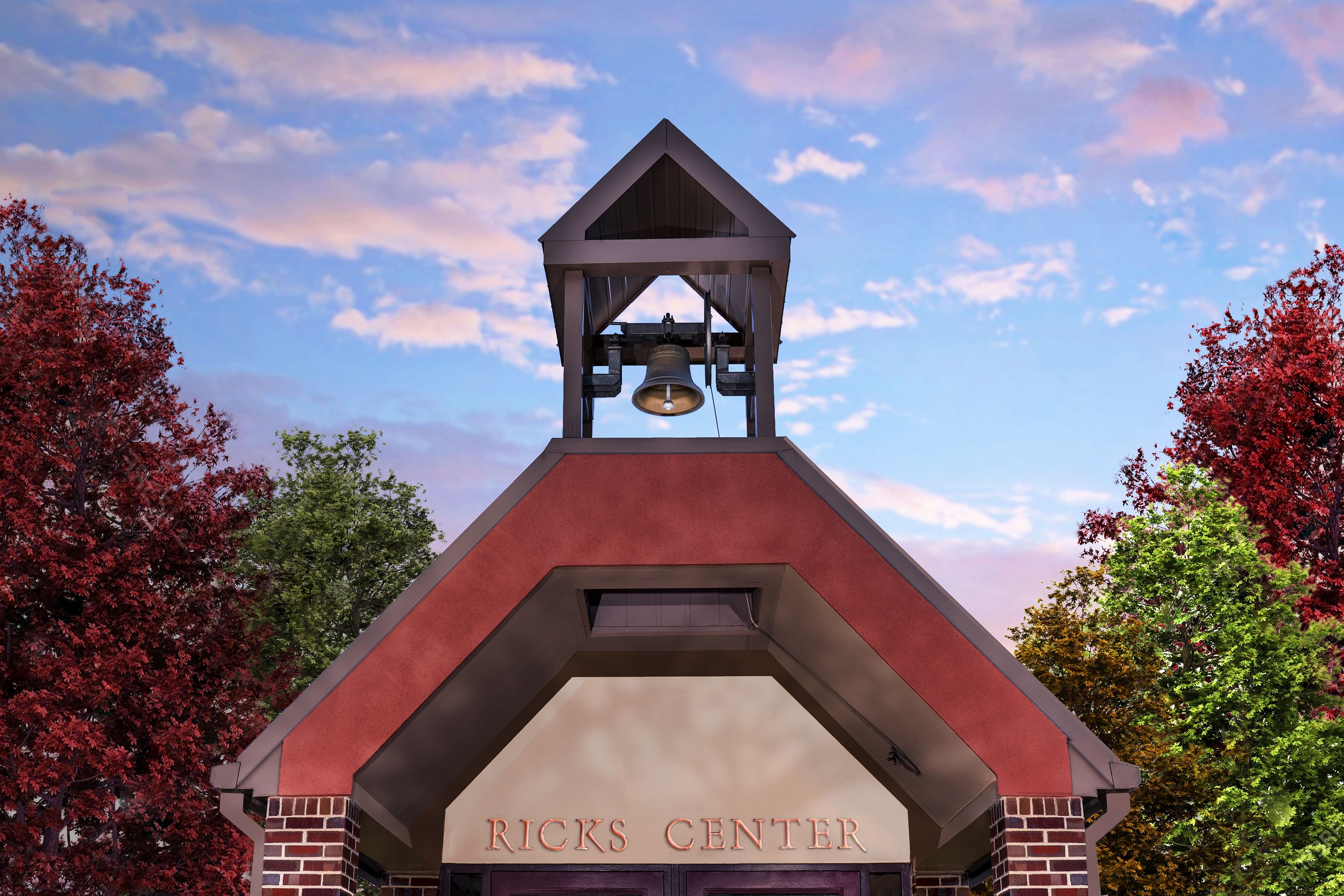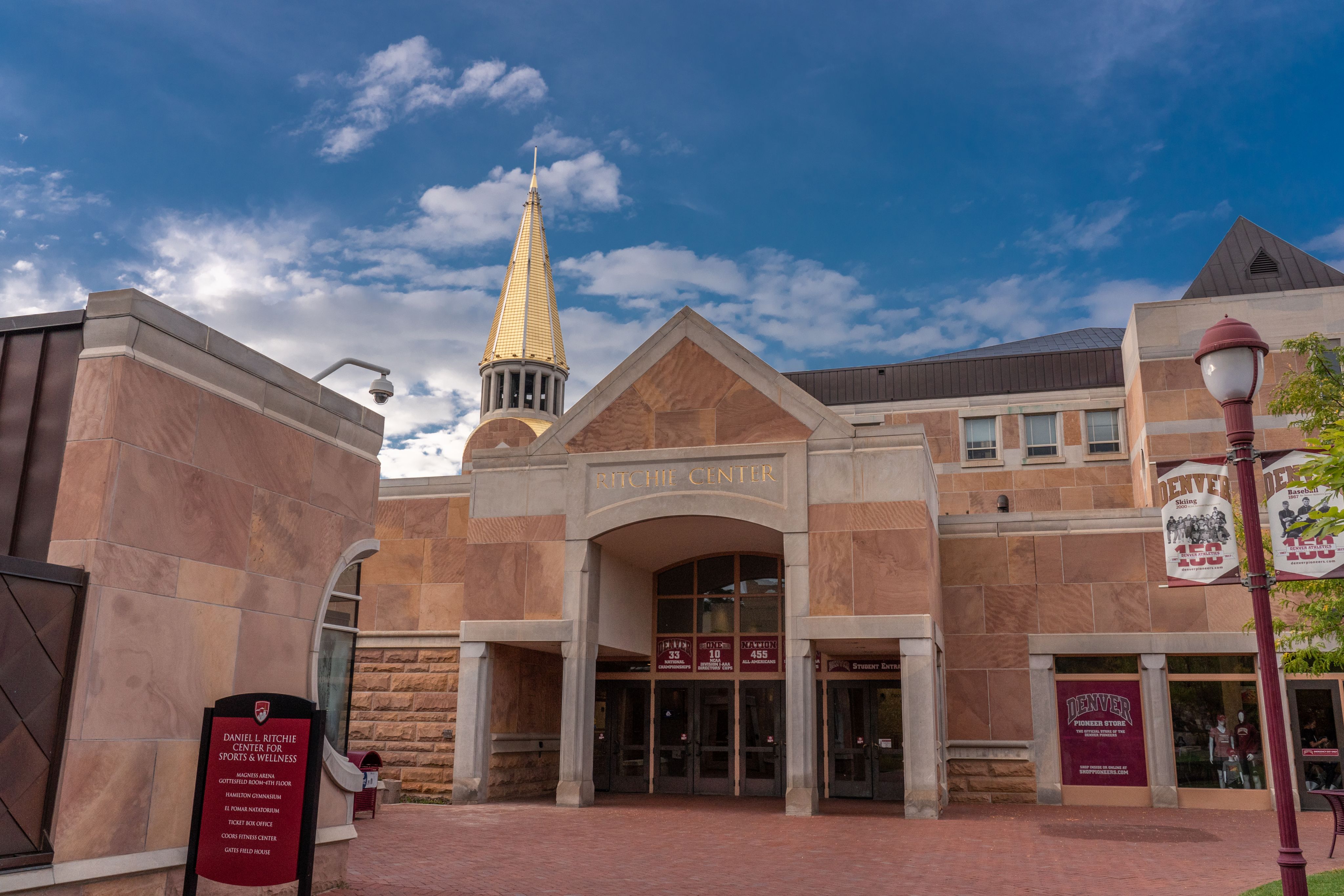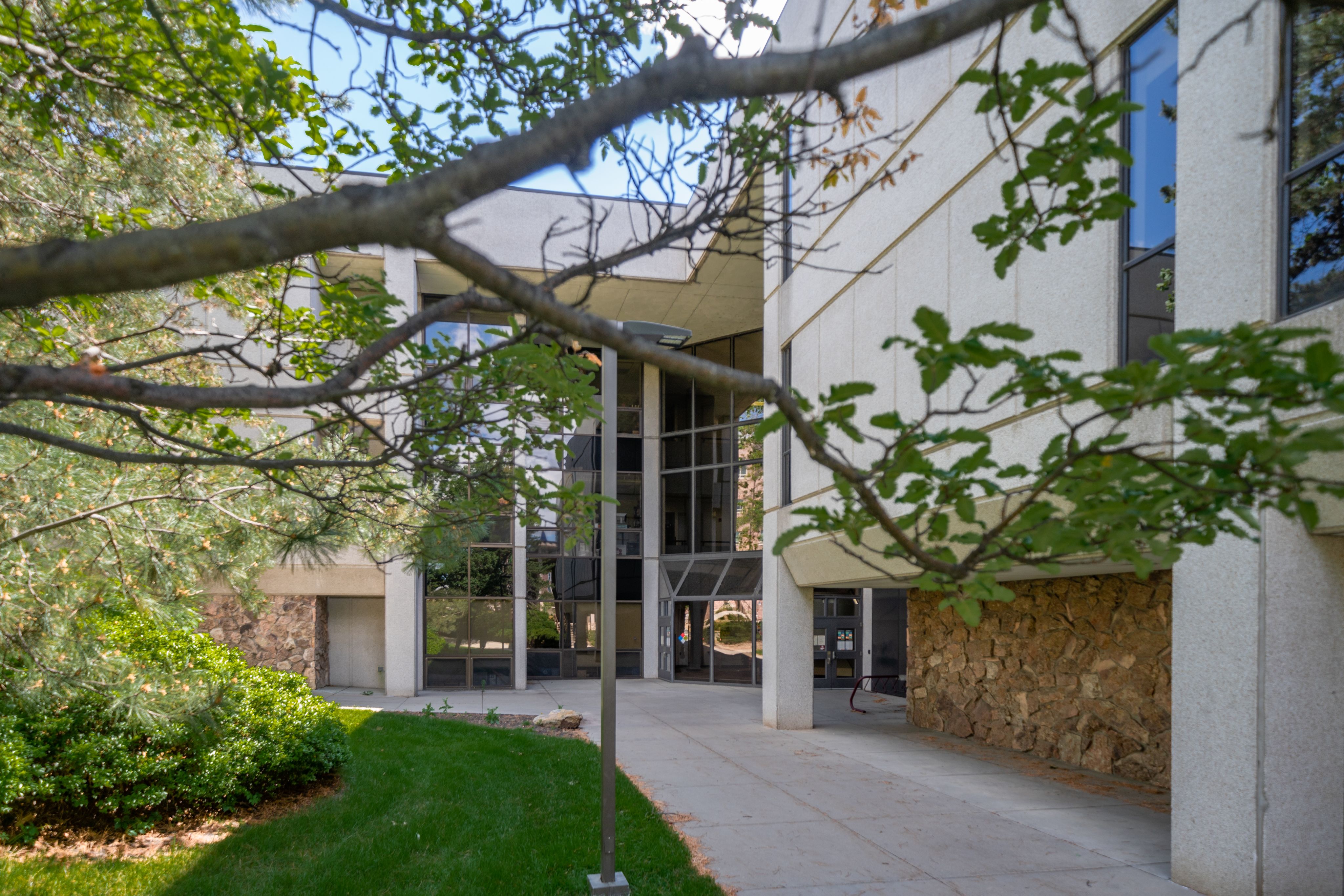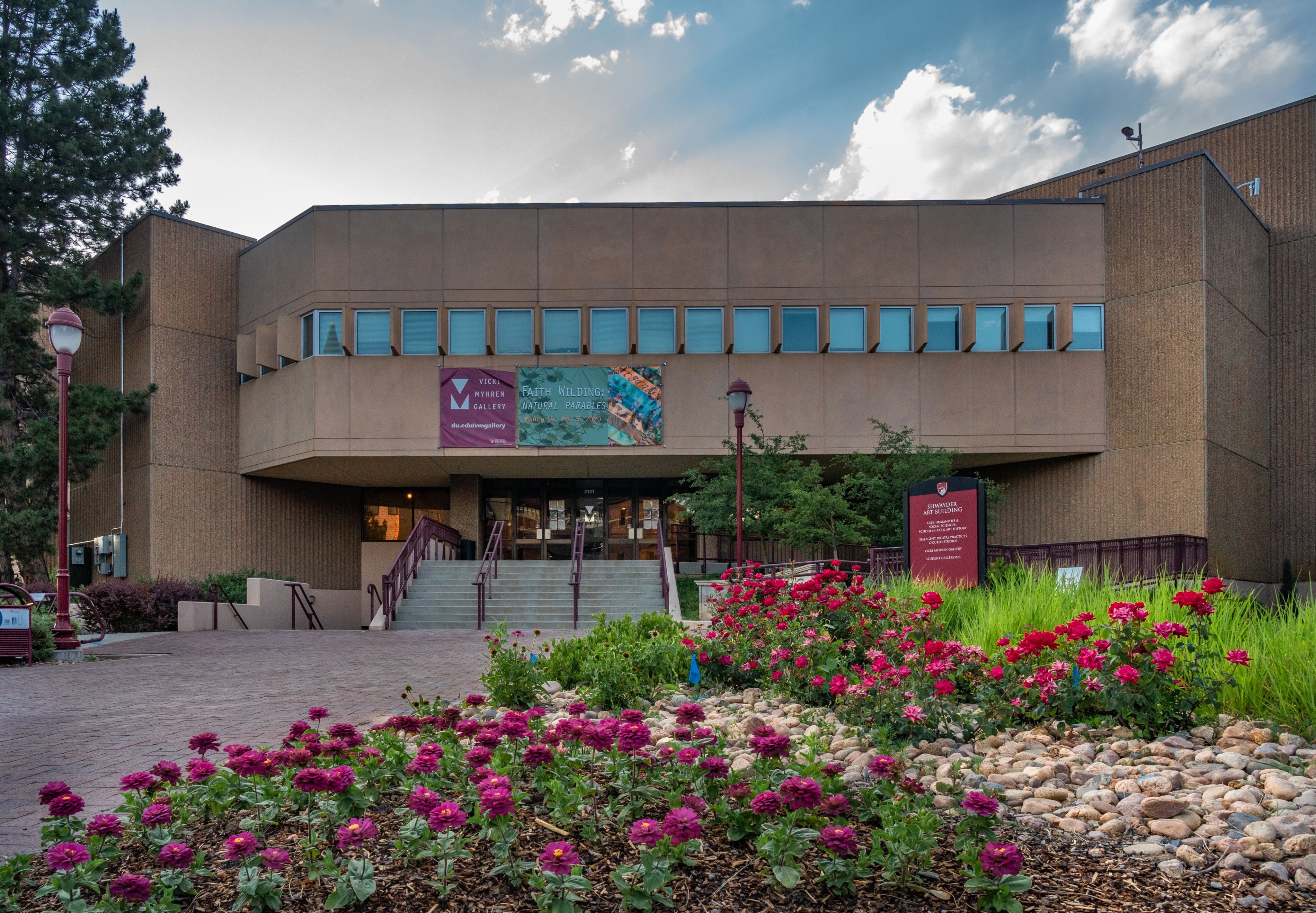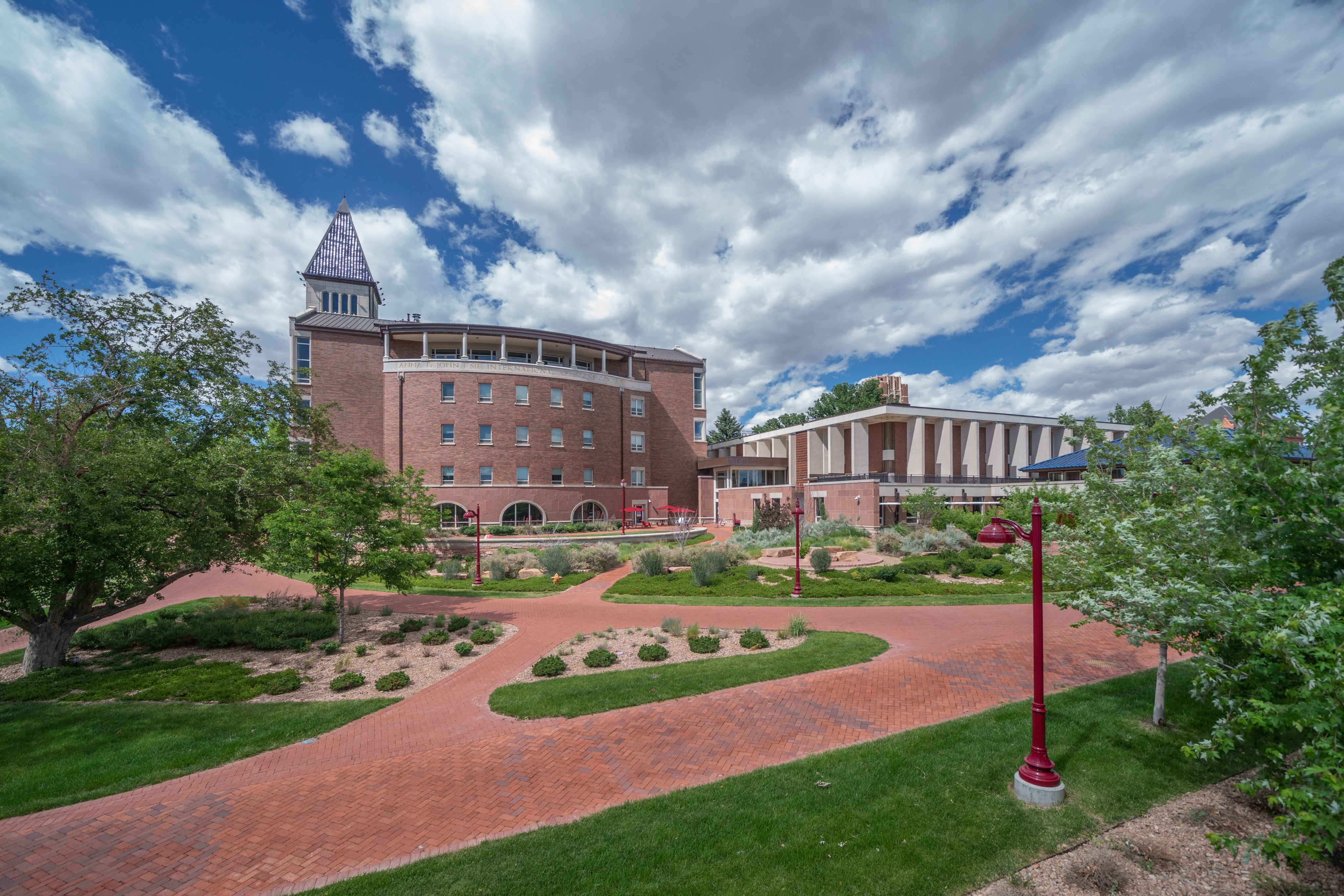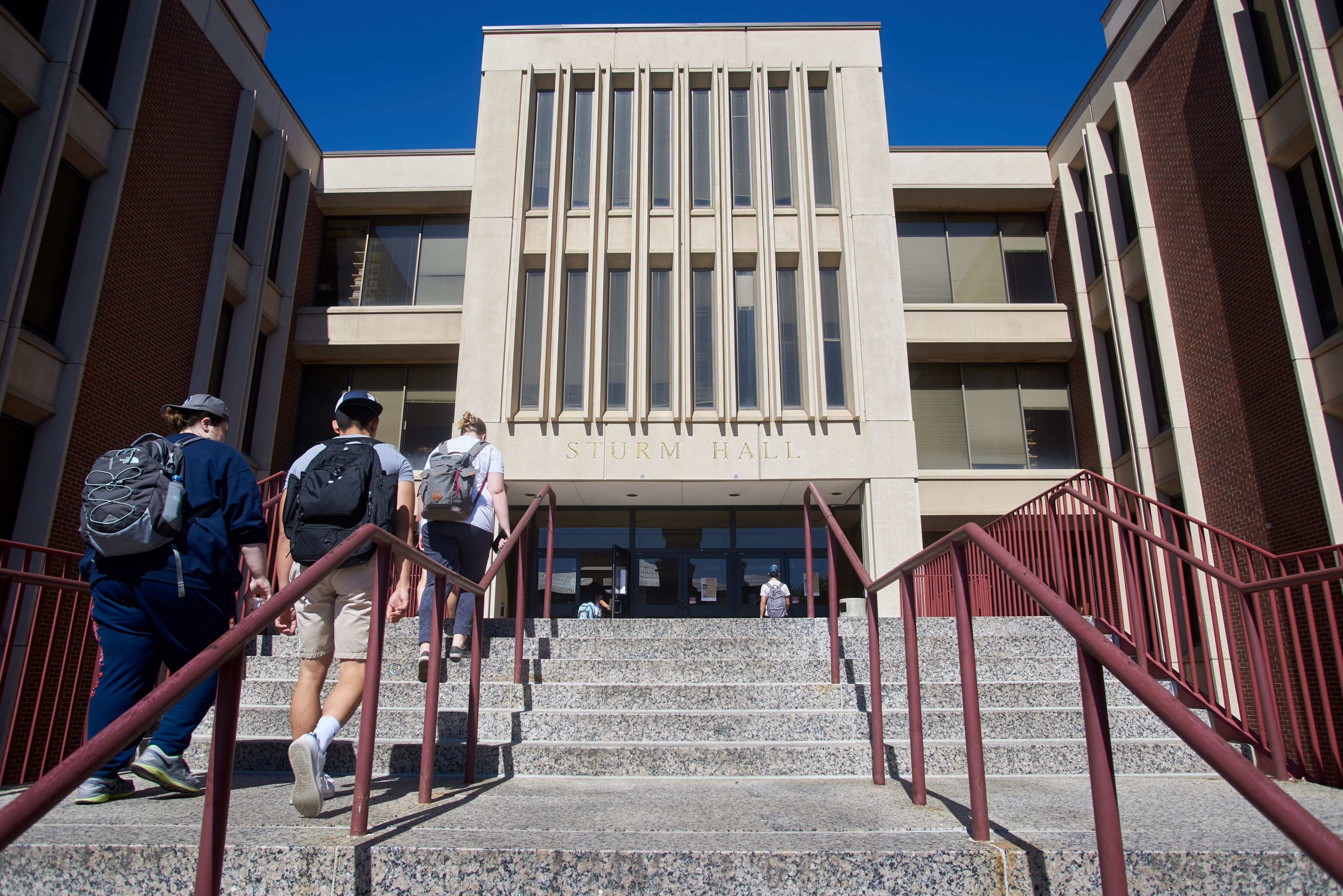Namesakes: The People that Made DU
By Connor Mokrzycki (BA '22) & Steve Fisher
*Revised and updated from a 2006 University of Denver Magazine article.
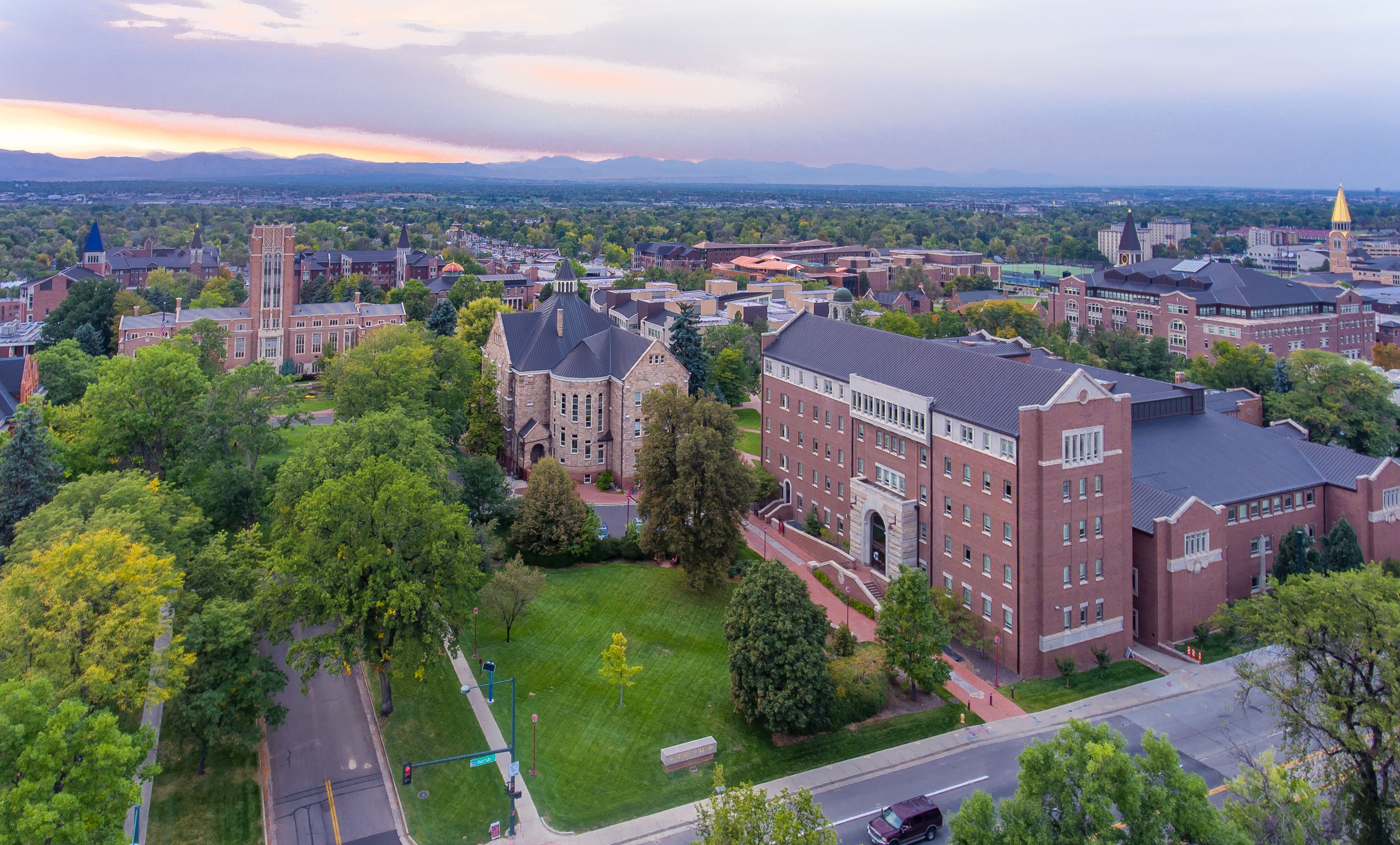
Did you ever wonder who Johnson and McFarlane were? Or how the Pioneers came to skate in Magness Arena?
Of the University’s numerous buildings, dozens are named for individuals and the roles they played shaping DU’s campus, programs and community. From beloved faculty members and industry giants to philanthropists and dedicated alumni, these are the people that helped make DU.

Ammi Hyde Building
The home of the Graduate School of Professional Psychology is named for one of DU’s most beloved early professors. Ammi Hyde was born in Oxford, New York, in 1824. In 1880, his wife’s ill health drew him west to teach Greek and Latin at DU. Hyde served as acting chancellor from 1889-90 and, in 1894, the ordained Methodist minister became the first pastor of the University Park United Methodist Church. Hyde retired in 1911 after 70 years of teaching but remained active in campus activities until his death in 1921 at the age of 97.
Anderson Academic Commons
Perhaps one of the most frequently visited buildings on campus, the Anderson Academic Commons first opened its doors in 2013 thanks to a donation from Mr. Anderson. The 154,223 ft² LEED Silver Certified building has thousands of pieces of furniture refurbished and reused from Penrose Library.
The building houses DU’s library, special collections and numerous work and study spaces for students, earning its spot as the top ranked college library by the Princeton Review in 2022.
Barton Lacrosse Stadium
Completed in 2005, Barton Stadium is named in memory of Peter Barton (1951-2002), an adjunct professor in DU’s Daniels College of Business and former president and CEO of Liberty Media Corp. Barton’s passion for coaching youth lacrosse led his wife, Laura, to name the 1,800-seat DU stadium in his honor. At the time, it was the first purpose built collegiate lacrosse stadium in the nation.
Boettcher Center
The Boettcher Center is named for the Colorado-based Boettcher Foundation, which was incorporated in 1937 by Charles Boettcher and his son Claude. The Boettcher Center opened in 1963 as the Boettcher Center for Science, Engineering and Research.
Buchtel Tower
The Buchtel Tower is the sole remaining piece of a chapel that was destroyed by fire in 1983. It was originally dedicated in 1917 as the Memorial Chapel to honor DU alumni who perished in World War I. In 1946, it was renamed the Buchtel Chapel in memory of Henry Buchtel (1874-1924), who served as DU chancellor from 1900-24 and Colorado governor from 1907-09. In 2015, the tower was rededicated by the Sturm family in honor of veterans.

Burwell Center for Career Achievement
The Burwell Center is named in honor of Barbara Burwell, the late Rod Burwell, and their sons, Peter (BSBA ’11), Blake (BSME, MBA ’15), and Michael (BA ’16, MBA ’17), whose gift transformed the career resources available to students.
The Burwell family’s strong ties to the University are rooted in the connections their sons built during their time on campus, particularly through their active involvement in the Kappa Sigma fraternity. The networks they built played a vital role in their professional journeys, and in turn, the Burwell Center has helped equip students for their lives after graduation since opening in 2019 by providing networking, resume assistance, interview preparation and no-cost professional clothing to students for interviews.
Chamberlin Observatory
The observatory is named for amateur astronomer Humphrey Chamberlin, who in 1888 funded the purchase of the telescope and construction of the observatory. Born in England in 1847, Chamberlin brought his family to Colorado in 1880 in an attempt to improve his health. Chamberlin became wealthy through real estate, water, railroads, and banking but lost his fortune during the 1893 Silver Panic. After which, he "frequently visited the campus and commented that 'all I have left is what I gave away,'" according to the late history professor Allen Breck.
Today, the observatory is a Denver historic landmark and is still used regularly for stargazing by the Denver Astronomical Society.
Chambers Center for the Advancement of Women
Opened in 2004, the Chambers Center is named for Merle Chambers (LLM ’84). She was president of the Chambers Family Fund, whose donation help build the former home of DU’s Women’s College, the Women’s Foundation of Colorado and several other organizations. Chambers founded Axem Resources, a privately held oil and gas company, and also served as CEO of Clipper Exxpress, a family-owned intermodal transportation company. Chambers also is a former Women’s Foundation board member. The Chambers Center is currently home to DU’s Equity Labs and the Gender, Women's and Sexuality Studies department.
Chester M. Alter Arboretum
The University of Denver's Chester M. Alter Arboretum was founded in 1999. The space is named after Chester Alter, DU chancellor from 1953 to 1967. Alter led a period of significant growth, expanding the campus from 75 to 125 acres and overseeing a surge in construction. Today, the Arboretum stands as a testament to his impact, home to approximately 2,100 trees and thousands of woody plants spanning 427 species and varieties.
Craig Hall
The home of the Graduate School of Social Work was formerly known as Spruce Hall. Reopened in August 2005 as Craig Hall, the building is named for Rebecca (MSW ’84, PhD ’00) and James Craig. Beyond equipping students with the tools and knowledge they need to make an impact on communities across Colorado and the nation, Craig Hall houses numerous researchers that contribute to the University's R-1 status.
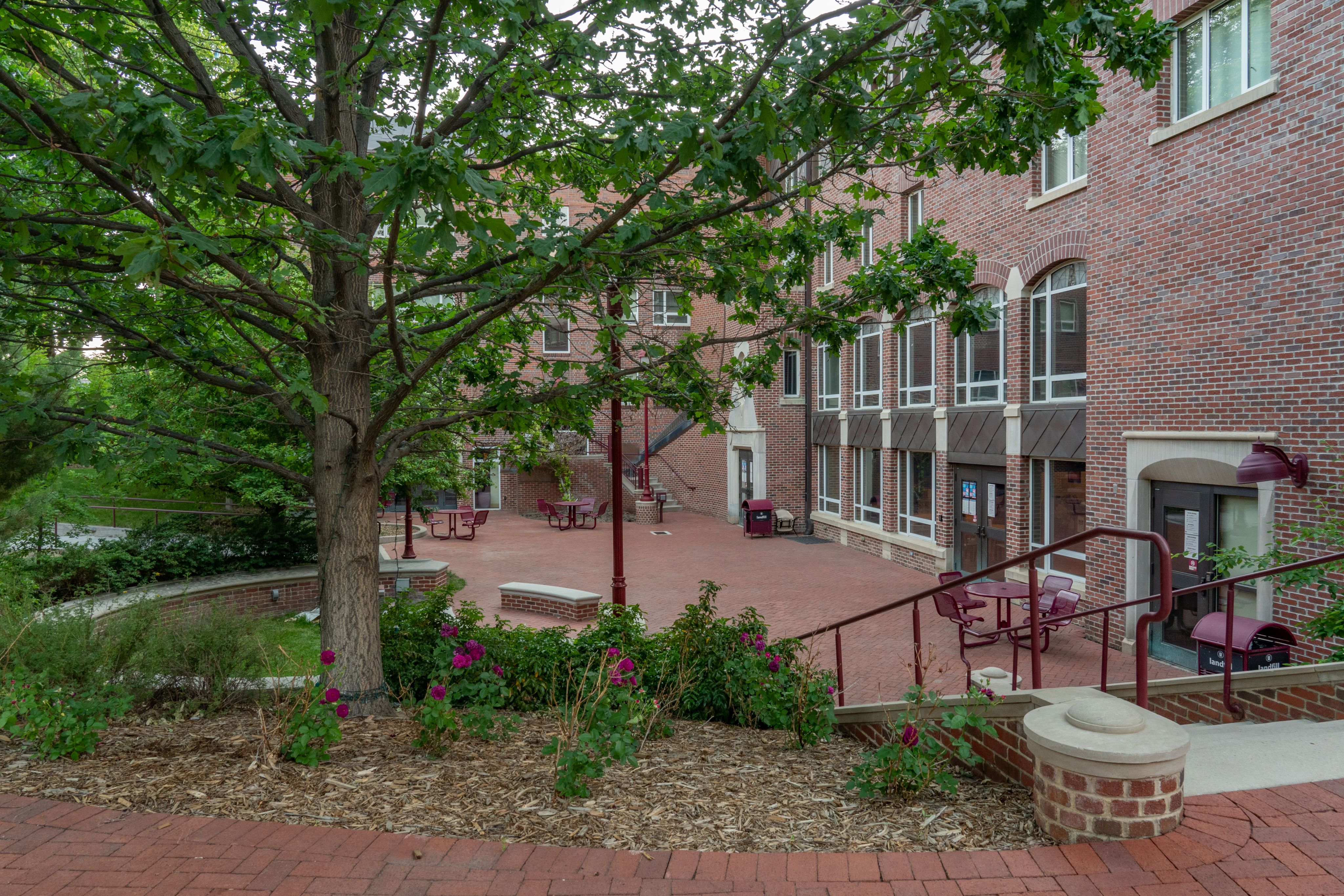
Daniels College of Business
The Daniels College building is named for Bill Daniels (1920-2000), who is regarded as the father of cable television. In 1952, he built the first cable system to send a broadcast signal via microwave.
Daniels demonstrated a steadfast commitment to the University through gifts that enhanced both the business curriculum and campus facilities. His dedication to ethics in business led him to challenge DU to integrate ethical practices and leadership into the core business curriculum in 1989, making it one of the first programs in the country to do so. Daniels' legacy continues to inspire future generations of business leaders who are trained to prioritize ethical decision-making and responsible leadership.
Dan’s Garden
Outside of the Engineering and Computer Science Building, home to the Daniel F. Ritchie School of Engineering and Computer Science, lays Dan’s Garden, named in honor of the late Daniel L. Ritchie (1931-2025), a transformational chancellor who shaped much of the campus that students, faculty and alumni know today. Dan’s Garden was dedicated in 2017. The garden provide a home for a variety of plant life including lotus flowers and dwarf conifers.
Dimond Family Residential Village
The University’s newest on-campus housing opened in 2020, made possible by a gift from alumnus and current DU trustee Navin (MBA ’86) and Rita Dimond, along with their daughters Ashley and Sonja.
Navin Dimond immigrated from England to the United States in the 1980s for college. Later, he landed a job in the Daniels College of Business and worked at DU while he earned his MBA, enabling Dimond and his wife Rita to launch Stonebridge Companies, a Denver-based hospitality management firm.
The Dimonds believe that fostering a strong sense of community for first-year students is essential, creating lasting friendships that can transform their lives on campus and beyond.
Driscoll Commons
Namesake William Driscoll (AB ’42, MS ’48) was born in Pagoda, Colorado, in 1920. He taught zoology at the University from 1944-48, then left to earn a PhD at the University of California, Berkeley. He returned to DU in 1951 and resumed teaching until 1968, when he became associate dean of the College of Arts and Sciences. He continued to teach part time until his death in 1983. Driscoll won the DU Outstanding Faculty Award in 1961, and shortly before his death, he received the Evans Award. A bridge spanning Evans Avenue connects the Driscoll Commons and the Community Commons.
Evans Chapel
Originally located at 13th and Bannock streets in downtown Denver, the Evans Memorial Chapel was dedicated in 1873 in memory of Josephine Evans, who died of consumption in 1868 at age 24. When threatened by demolition, the chapel was disassembled and moved to campus in 1960. It was designated a national historic site in 1988 and is the oldest building on campus, but not the “first,” as that distinction belongs to University Hall.
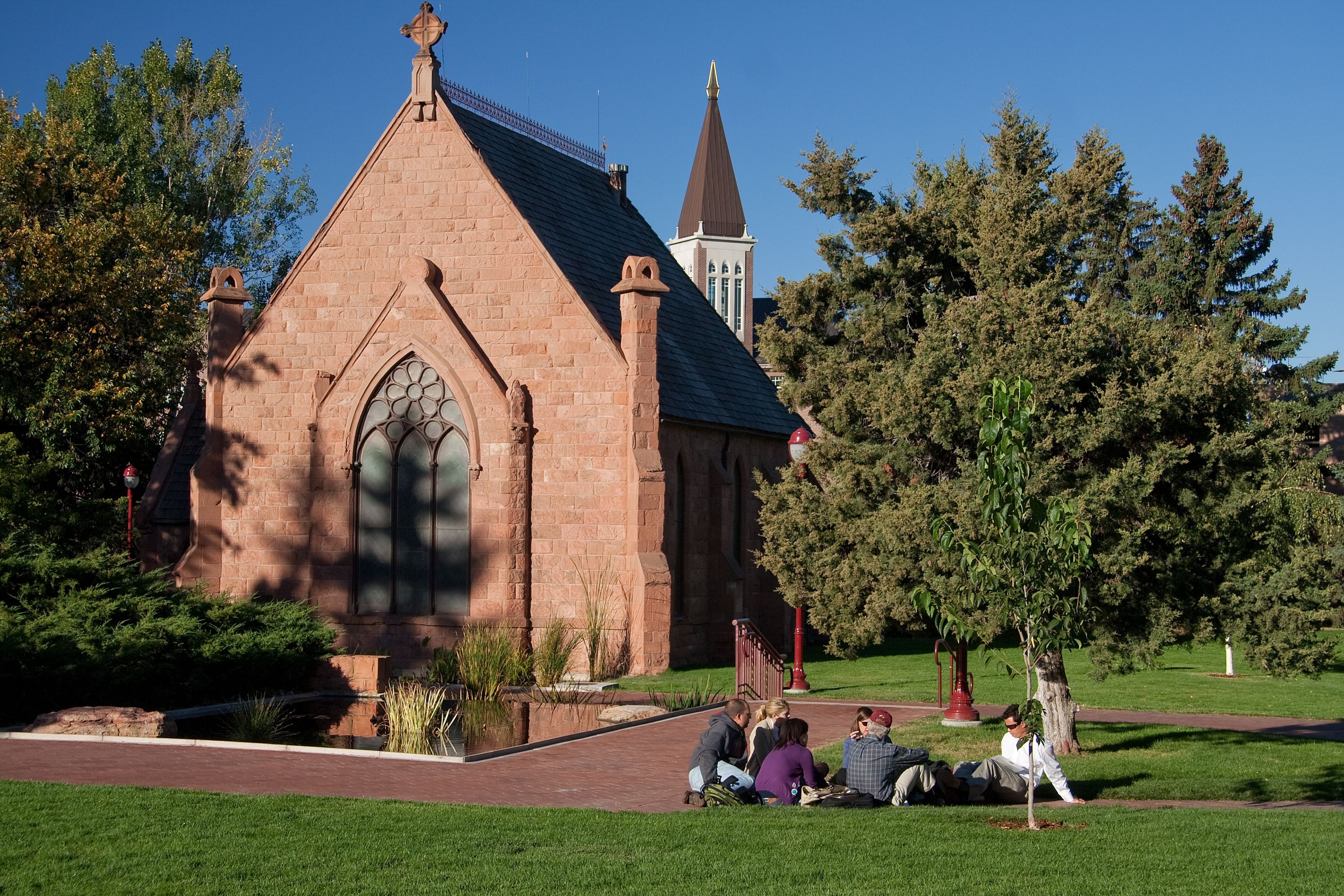
Fisher Early Learning Center
The Fisher Center is named in honor of telecommunications executive Donne Fisher and his wife, Sue, who donated toward its construction. The Fisher Center was created to provide a safe and enriching environment for children to grow, learn and develop, as well as serving as an resource to develop effective early learning educational programs through the Morgridge College of Education.
Opened in 2000, the center serves 190 children up to age 5. Donne Fisher has served as a member of Liberty Media’s Board of Directors and is president of Fisher Capital Partners, a venture capital and investment company he founded in 1991.
Hamilton Gymnasium
Frequently packed by varsity, club and rec league teams of all kinds, Hamilton Gymnasium is named after the late Fred Hamilton, an Air Force veteran and pioneer in the oil and gas industry. He was also a long-time board member at the Denver Art Museum. Hamilton’s wife, Jane, served on the DU's Board of Trustees from 1976 until 2015.
Harper Humanities Garden
Gifted by Herbert R. Harper, DU chancellor from 1922 to 1927, and dedicated in 1965 in honor of his mother, Mary Reece Harper, the Harper Humanities Garden is full of annual plants that live alongside decades-old trees, creating a landscape that changes with the seasons.
Johnson-McFarlane Hall
Better known as “J-Mac,” Johnson-McFarlane Hall opened in 1958. The residence hall is named after two popular faculty members from an earlier era, Granville “Granny” Johnson and Ida McFarlane. Born in Aspen, Colorado, in 1897, Johnson earned a BA and MA in physical education from DU in 1923 and 1925. He coached the Pioneers wrestling team and taught physical education at DU until his death in 1956 at the age of 59. At the time of his death, Johnson was the University’s longest serving faculty member. Ida McFarlane, who was born in Central City, Colorado, in 1873, taught English at DU for 33 years until her death in 1940.
John Moye Hall
The former fraternity house and current home of the Institute for the Advancement of the American Legal System (IAALS) is named after the late John Moye, visionary Denver attorney, founding partner at Moye White LLP, and IAALS founder. Moye began teaching law at the University in 1969, where he remained involved until his passing in 2022. Throughout his career, Moye’s dedication to the law and legal systems landed him a role as a national bar review lecturer, where he instructed thousands of law school graduates across the country. The building was dedicated in 2012, with support from Ralph and Trish Nagel.

Joy Burns Center
Home of the Fritz Knoebel School of Hospitality Management, the Joy Burns Center is named after former trustee Joy Burns. She came to Denver from Houston in 1956 to work for an oil company. Throughout her career, Burns found success in a variety of industries, serving as president of the Burnsley Hotel, chair of the Denver Metro Convention and Visitor's Bureau, founder and director of the Women's Bank, and founder of the Women's Foundation of Colorado. Burns was inducted. into the Colorado Women's Hall of Fame in 2000.
First serving as a volunteer in DU's library in 1972, Burns joined the board of trustees in 1981. She went on to serve two stints as chair (1990-2005, 2007-2009)—the first woman to lead the board in DU’s history.
In addition to the Joy Burns Center, her name is on a plaza in the Newman Center for the Performing Arts and on the community ice arena where the DU hockey team practices.
Knudson Hall
The engineering department’s home is named for Clarence Knudson, who served as dean of the College of Engineering from 1941-60. A native Denverite, Knudson received his BS and MA degrees in chemical engineering from DU in 1921 and 1922, respectively, and began teaching at the University in 1929. Knudson Hall was built in 1960 and originally housed the University of Denver Research Institute’s chemical research facilities. Knudson retired in 1966, and the building was renamed for him in 1968.
Magness Arena
The arena is named after cable television pioneer Bob Magness, who donated towards construction costs. Magness founded Tele-Communications Inc. and relocated to Denver at the recommendation of Bill Daniels. Magness served as a University trustee and bred horses at his ranches in Colorado and California.
Margery Reed Hall
The daughter of Verner and Mary Reed, Margery Reed was born in Colorado Springs, Colorado, in 1894. She graduated from the University of Denver in 1919 with a BA in English. That year she took a position as an assistant professor of English at DU and there met her future husband, Paul Mayo, who also taught English. In 1924, Paul and Margery traveled to Peru, where he joined the diplomatic service. Margery became ill in Peru and returned to the U.S., where she died in 1925 at age 31. Her mother, Mary Reed, donated toward the construction of Margery Reed Mayo Hall, which opened in 1929.
Mary Reed Building
In 1893, Mary and Verner Reed moved to Colorado Springs, Colorado, where Verner made his fortune in mining, banking, ranching, and irrigation. Following Verner’s death in 1919, Mary (1875-1945) became involved in charitable and philanthropic projects, including the Denver Community Chest. Shortly after her gift to construct Margery Reed Hall in her daughter’s memory, she presented DU with funds to erect a new library that would bear her name. In 1972, the building was decommissioned as a library and today houses the University’s administrative offices.

Meyer-Womble Observatory
Dedicated in 1996, the Meyer-Womble Observatory sits at 14,148 feet near the summit of Mount Blue Sky and was one of the highest operating observatories on earth. A gift from the estate of William Womble (BA ’34) funded construction of the facility and endowed the Womble Professorship in Astronomy. Eric Meyer—an anesthesiologist who designed the telescope—and his wife, Barbara, donated funds and brought the telescope optics from Chicago personally. As a result of damage to the telescope and, in particular, increasingly troublesome light pollution from the Denver metro area, the building was decommissioned as an observatory in 2018 but remains in service as a research station.
Nagel Hall
The legendary dorm for second-year students opened in 2008, made possible by a gift from Ralph and Trish Nagel. Ralph previously served on the board of trustees and is an honorary life trustee.
The couple, both passionate about education and the arts, significantly shaped the University of Denver through their longstanding support, including donating artwork to be displayed in Nagel Hall and a mural by Ralph in the ECS building. Their contributions extend beyond housing, as the Nagel Art Studios, which opened in 2010, provide students with a space to explore their creativity.
Nelson Hall
Opened in 2002, Nelson Hall is named for King Lee (BS ’50) and Shirley (attd. 1951-52) Nelson. Lee came to DU to play football and baseball and met Shirley there. After graduation, Lee worked for Johns Manville for 12 years and then started his own business, Nelson Pipeline Constructors. His company flourished, landing large projects including Denver International Airport. The Nelsons contributed toward construction of the hall that houses 430 students.
Newman Center for the Performing Arts
Named after Robert and Judi Newman, the center opened its doors in 2002 and has been acclaimed as one of the nation's finest university performing arts centers. It is also home to DU's Lamont School of Music and Department of Theatre, who present hundreds of performances each year.
Olin Hall
Olin Hall is named for the F.W. Olin Foundation of New York, which was established in 1938 by Franklin W. Olin, an engineer. Olin passed away in 1951. His foundation gave funds toward DU’s building, constructed in 1997 to house the biology department and science labs.
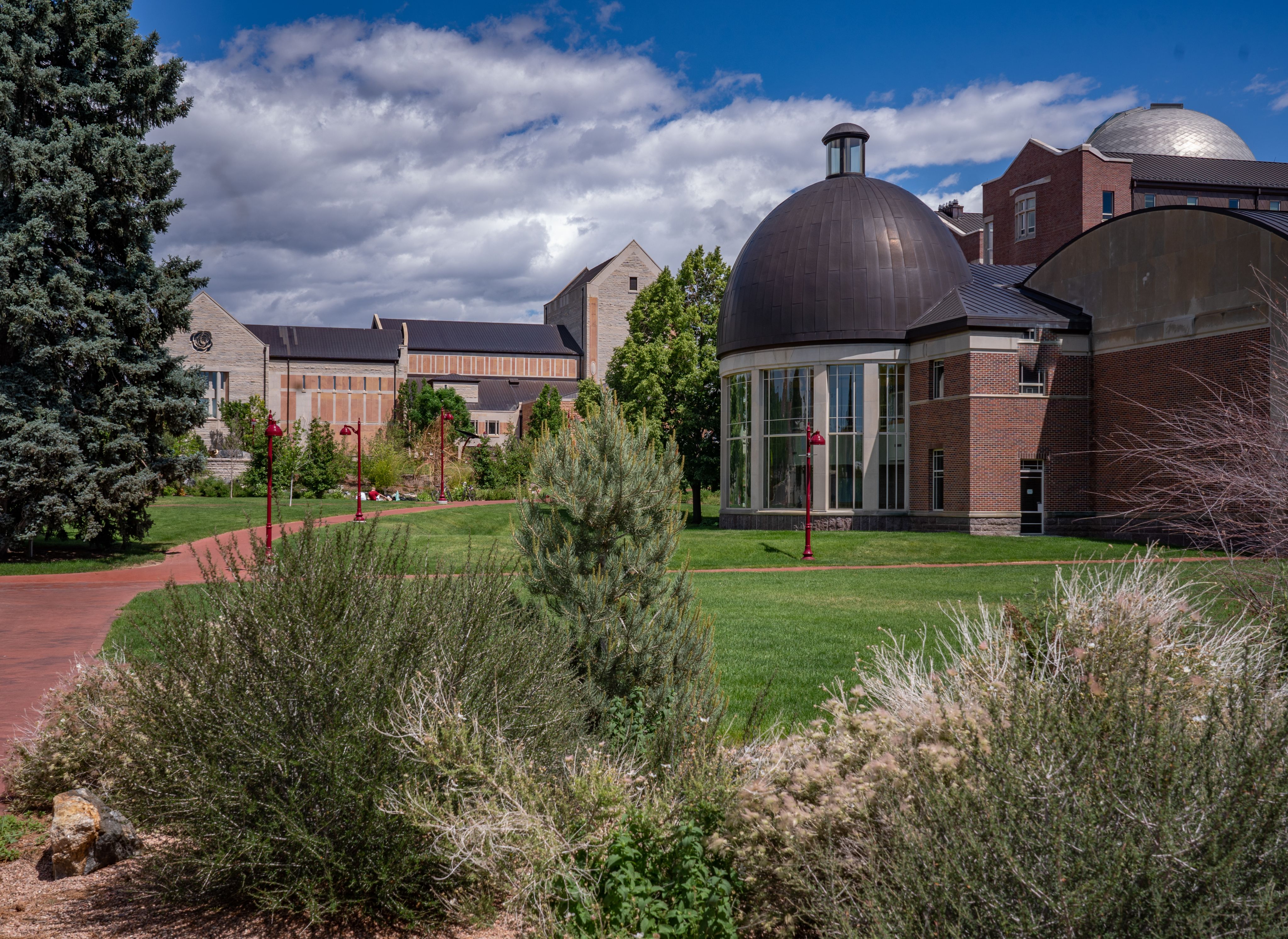
Ricketson Law Building
Home of the Sturm College of Law, the Ricketson Law Building (opened in 2003) is named for Frank Ricketson Jr. (1896-1987), grandfather of outgoing DU law Dean Mary Ricketson. A 1919 alumnus of the Westminster College of Law (which later merged with the DU law school), Ricketson served on the board of trustees from 1944-72. He was president of Fox Intermountain Theaters and also served as president of the Central City Opera for 26 years.
Ricks Center for Gifted Children
The Ricks Center was founded in 1984 as the University Center for Gifted Young Children. When the center’s new building opened in 1991, the building and center were named in honor of benefactress Alta Ricks (1905-2005), who donated financially for the facility. The Ricks Center enrolls 270 children ages 3 through the eighth grade.
Ritchie Center for Sports & Wellness
Named for Chancellor Emeritus and former Board of Trustees Chair Daniel L. Ritchie (1931-2025), the Ritchie Center opened in 1999 and includes a natatorium, two ice arenas, a fitness center, and other athletics amenities. Ritchie’s involvement with DU began when he became a trustee in 1983. He served as the University’s chancellor from 1989-2005. To kick-start the University’s economic rejuvenation in the 1990s, Ritchie gave DU his Colorado ranch.
Katherine A. Ruffatto Hall
Home of DU’s Morgridge College of Education, Ruffatto Hall takes its name from Katherine Ruffatto (BA ’05). A gift from her parents, Mike and Joan Ruffatto, enabled construction of the Morgridge College and provided a home to the Learning Effectiveness Program.
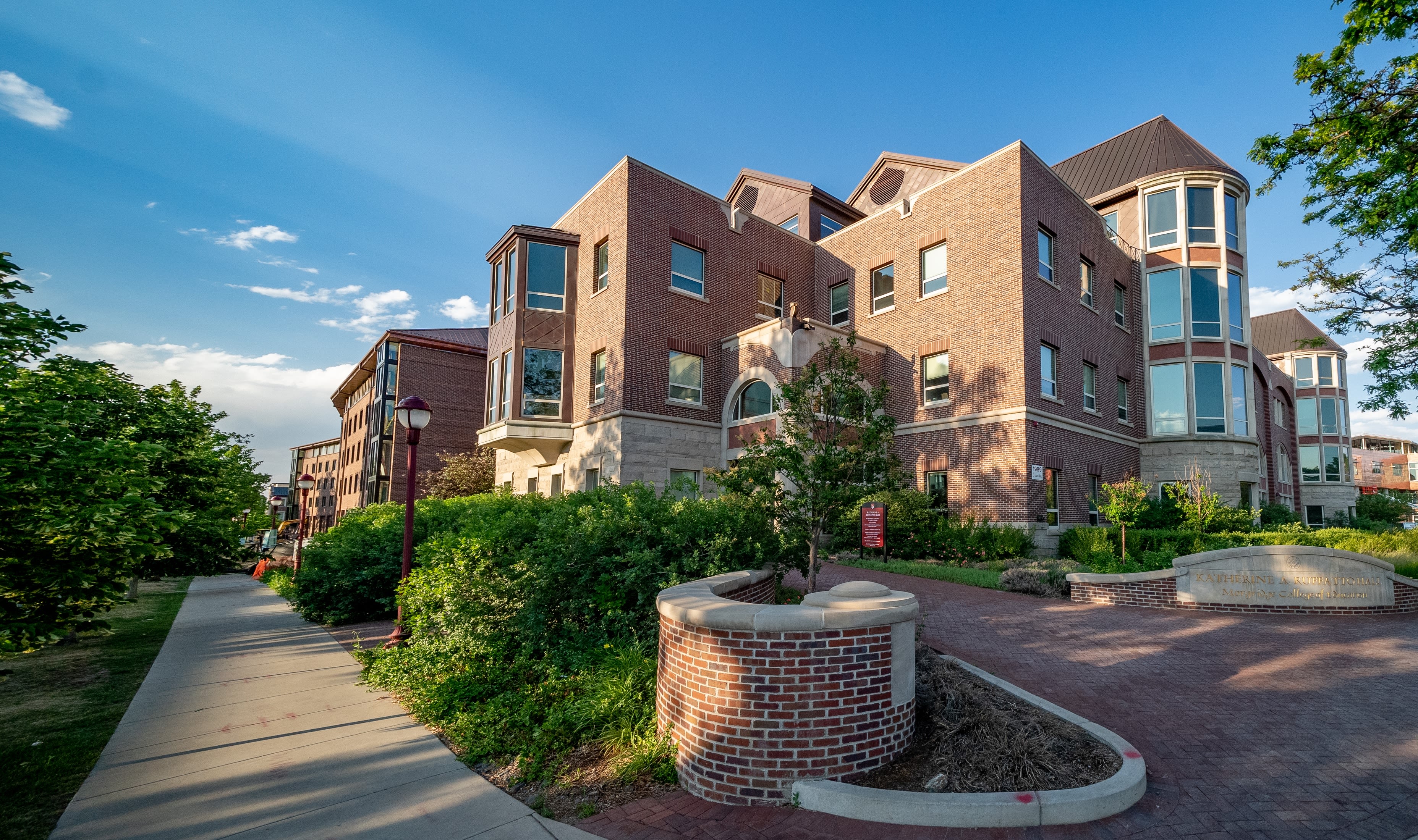
Seeley Mudd Science Building
Opened in 1982, the Seeley Mudd Science Building is named for Seeley Greenleaf Mudd, whose estate helped fund its construction. Born in Denver in 1895, Mudd went on to a career as a medical doctor and researcher. Upon his death in 1968, his will established a fund to be used for college buildings. DU’s Mudd building houses biology classrooms and labs.
Shwayder Art Building
The Shwayder Art Building opened in 1978. It is named for the Jesse and Nellie Shwayder Foundation. Jesse Shwayder founded the Shwayder Trunk Manufacturing Co. in Denver just after the turn of the 20th century and it grew into the Samsonite Luggage Corp.
The Shwayder Art Building houses classroom and gallery spaces, including the Vicki Myhren Gallery.
Anna and John J. Sie International Relations Complex
The Anna and John J. Sie International Relations Complex was dedicated in 2016, made possible by the generosity of John and the late Anna Sie. John previously served on the board of trustees and is an honorary life trustee. The complex houses the Josef Korbel School of International Studies; the Cherrington Commons, named for Ben Cherrington (1885-1980), an author of the United Nations Charter and DU’s chancellor from 1943-46; and the Sié Chéou-Kang Center for International Security and Diplomacy, named in honor of Ambassador Sié Chéou-Kang, father of John Sie.
Sturm Hall
Donald Sturm (1932-2024) and his wife, Susan Sturm, supported the renovation of the former General Classroom Building and adjoining Business Administration Building. Constructed in the late 1960s, the building was re-dedicated in 2000 and now houses classrooms and offices for faculty in the arts, humanities and social sciences. Don (LLB ’58) was a member of the board of trustees, and in 2004, he and Susan donated to DU’s law school, which was named in Don's honor.
Williams Tower and Carillon
A Korean War veteran, former Colorado state senator and co-founder of TelEvents, Carl Williams was an innovative leader in the cable industry. The 215-foot tower’s interior is decorated with ornate murals and tile mosaics and topped with a 65-bell carillon—one of the largest in North America. Williams served on the board of trustees from 1997-2004.
